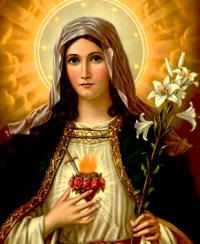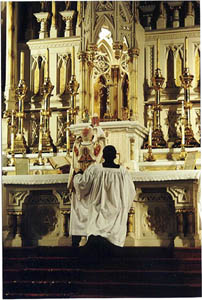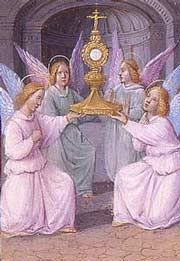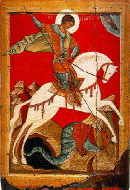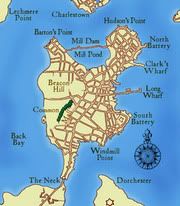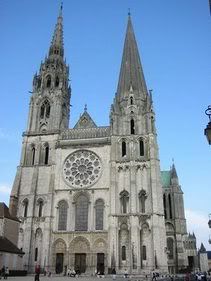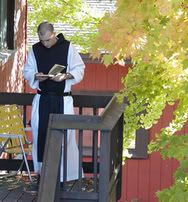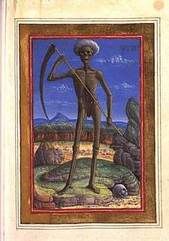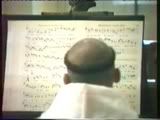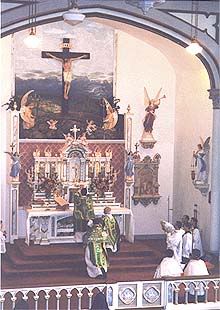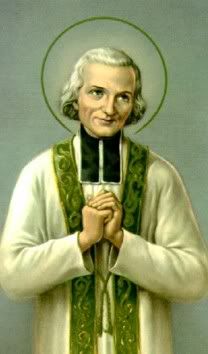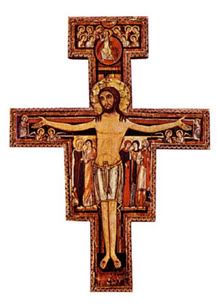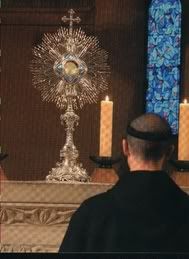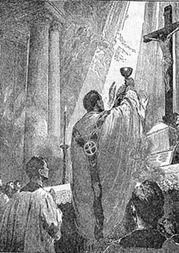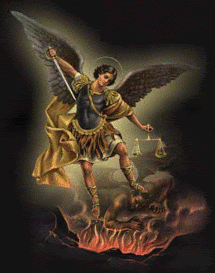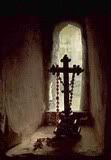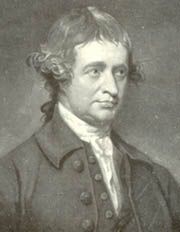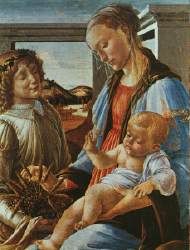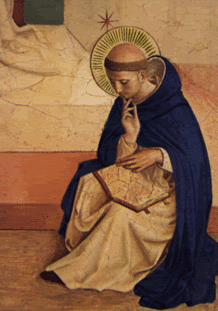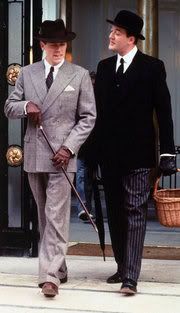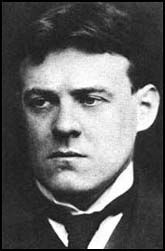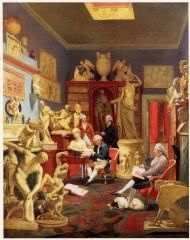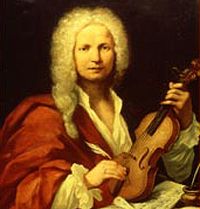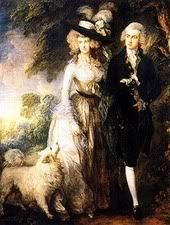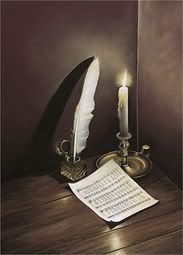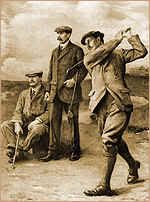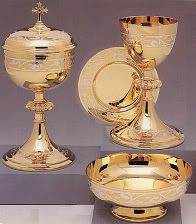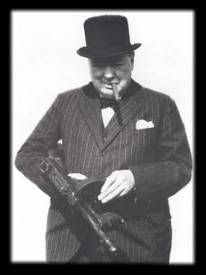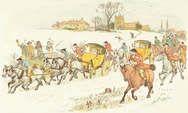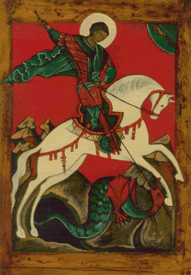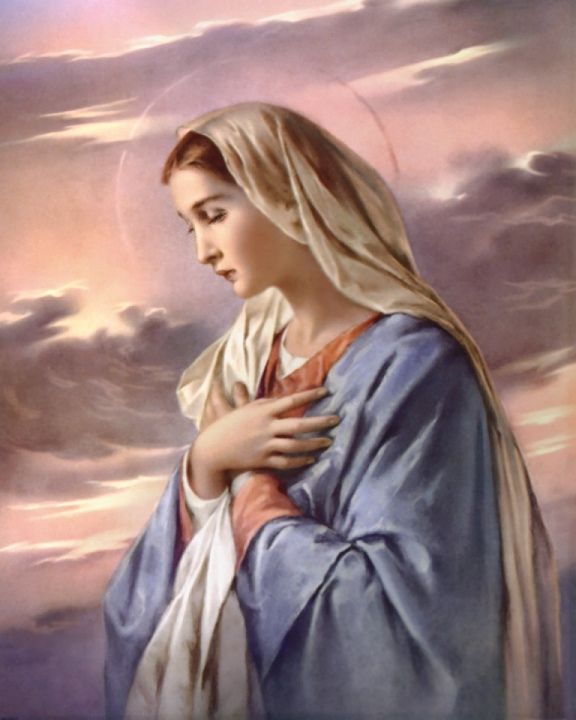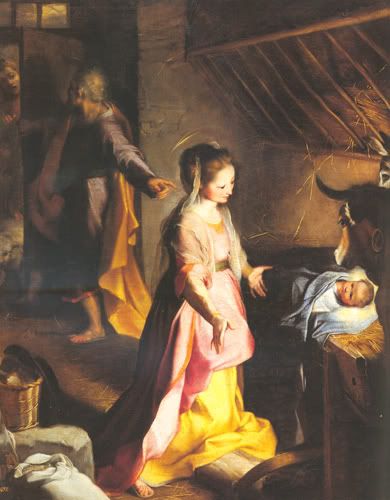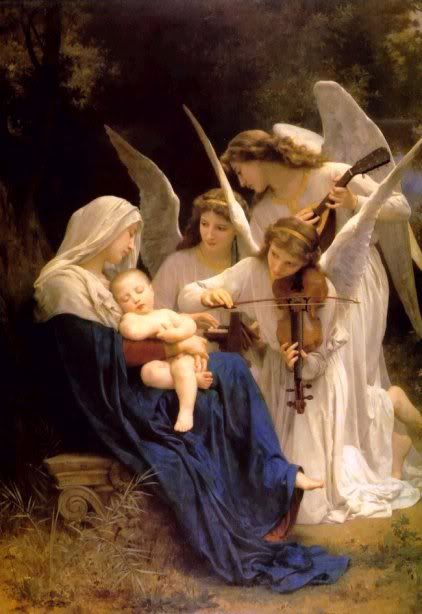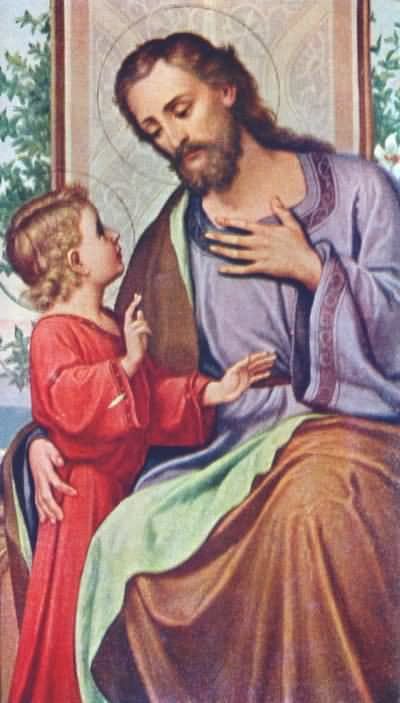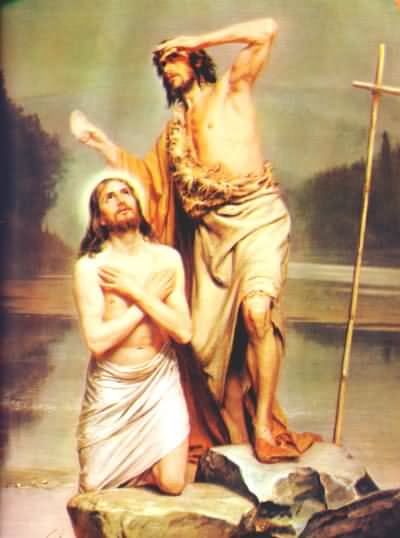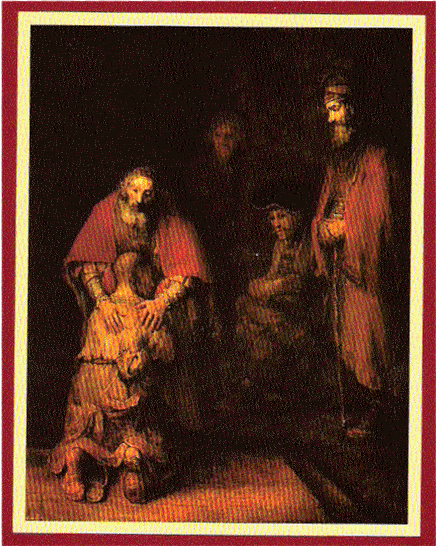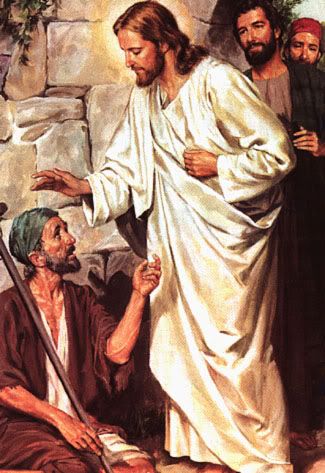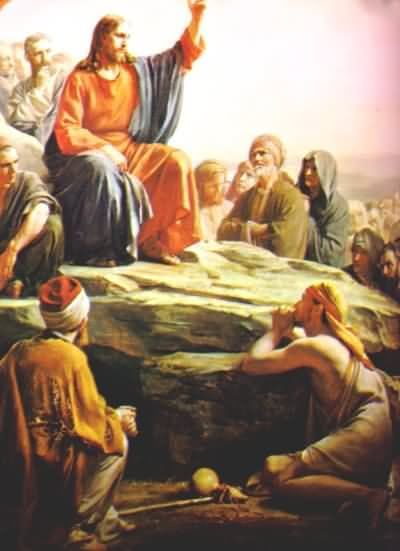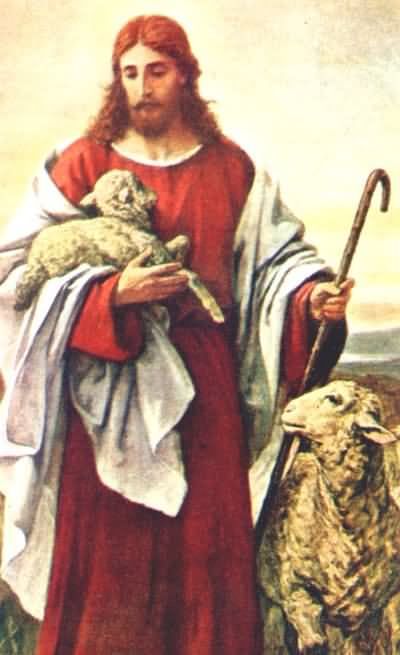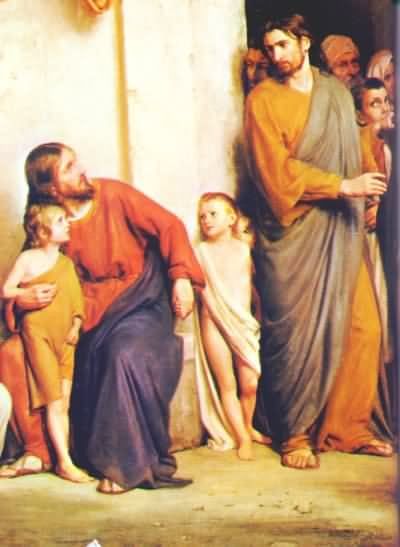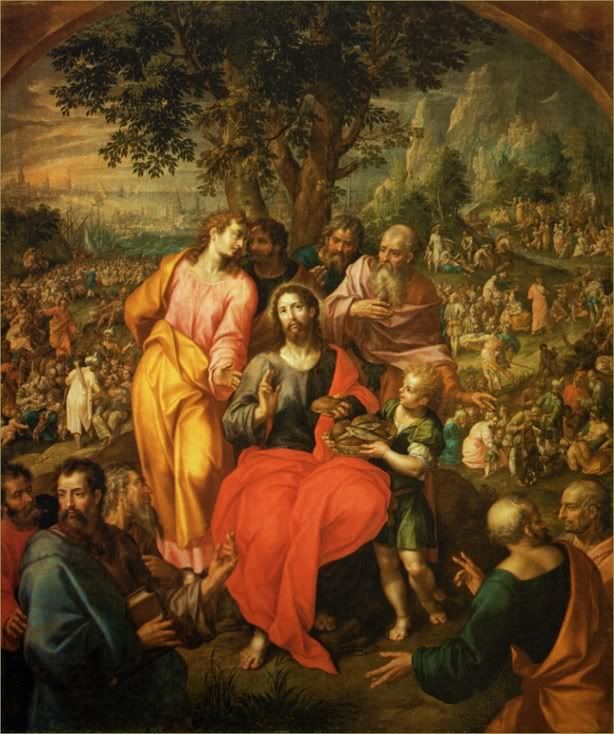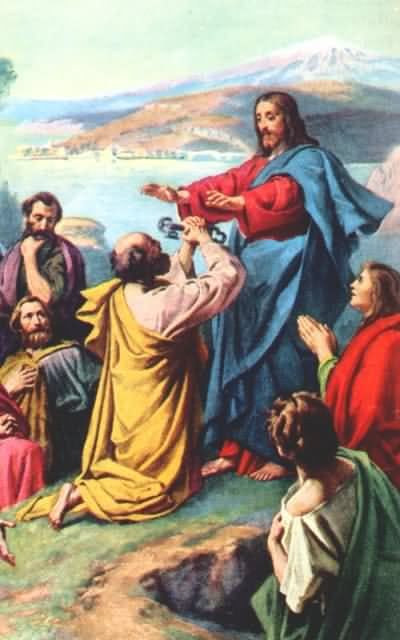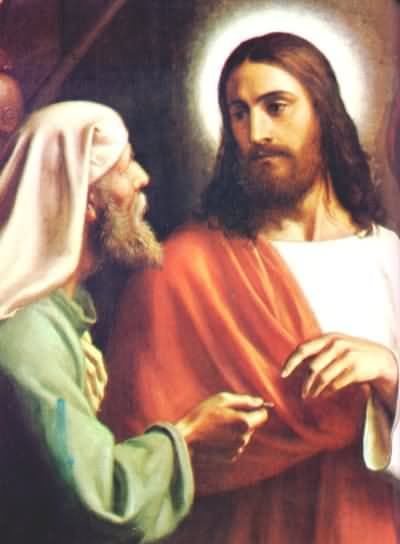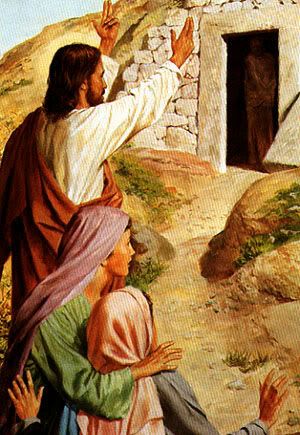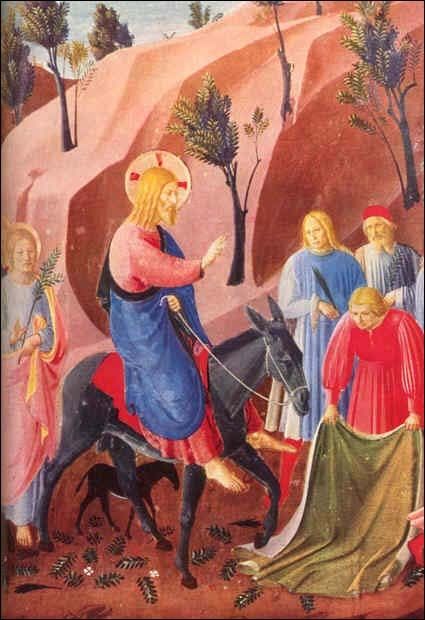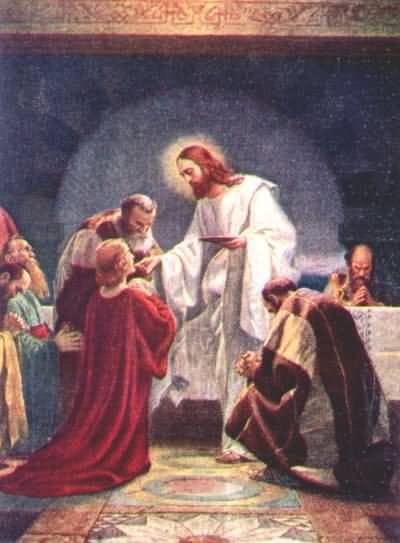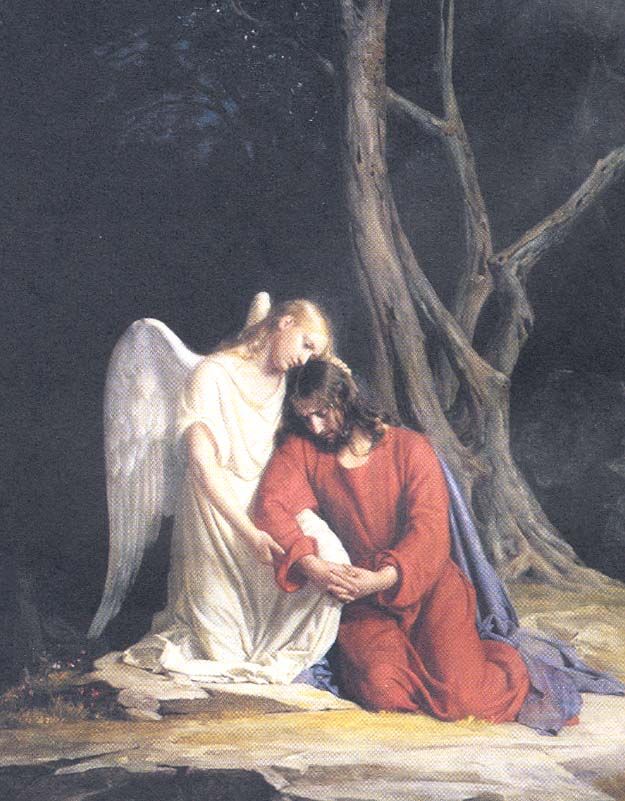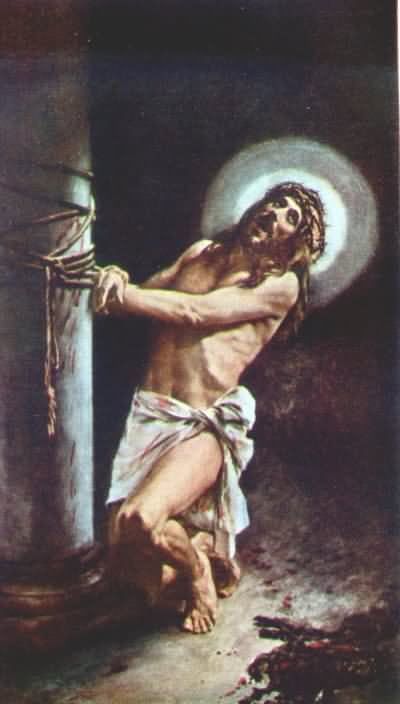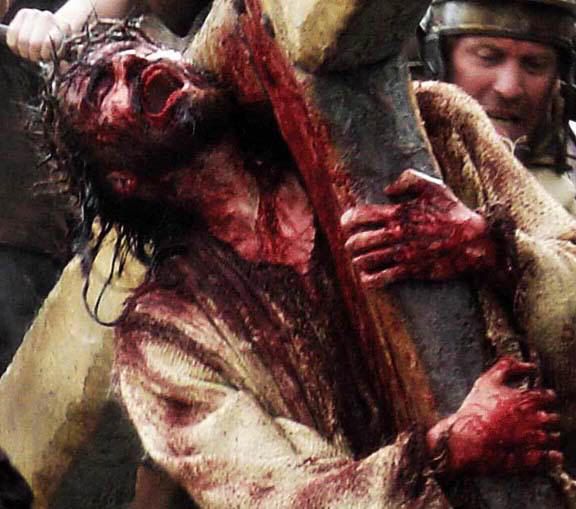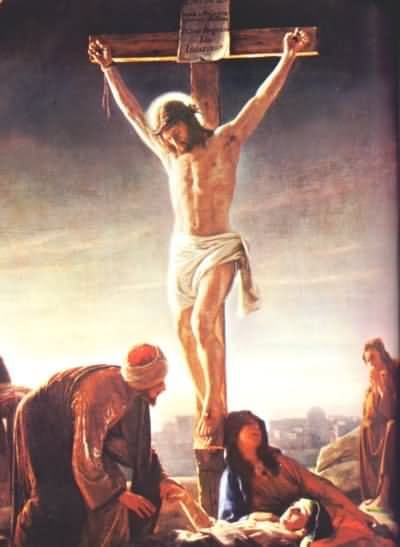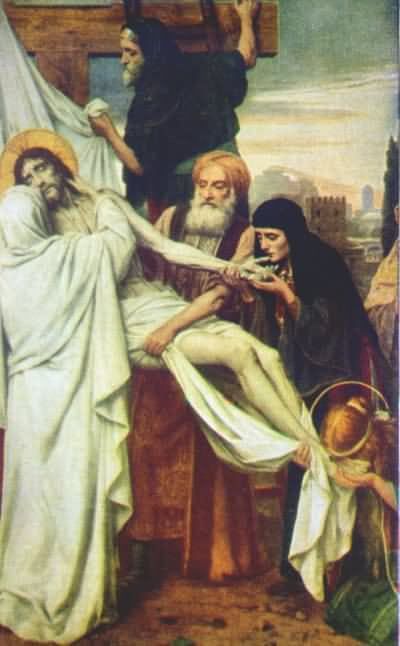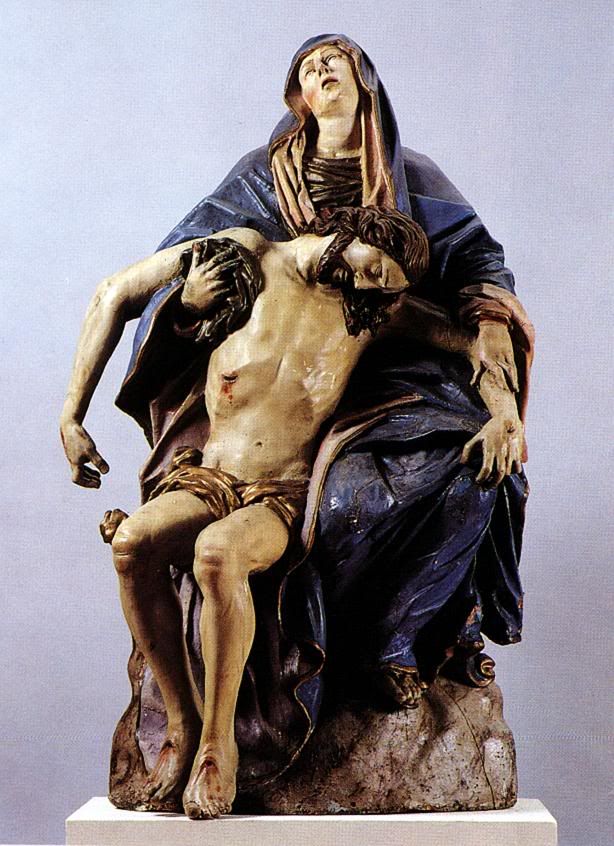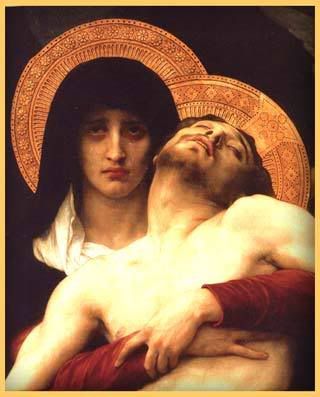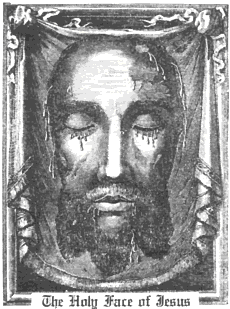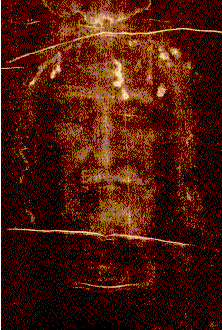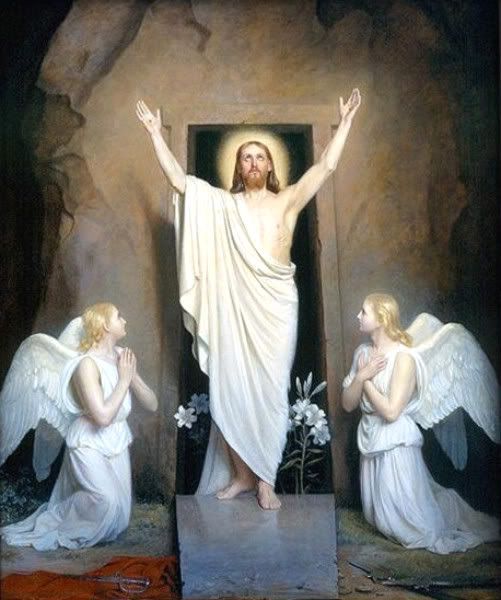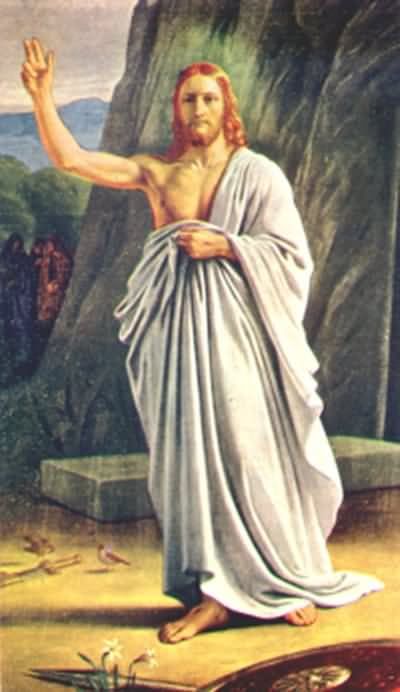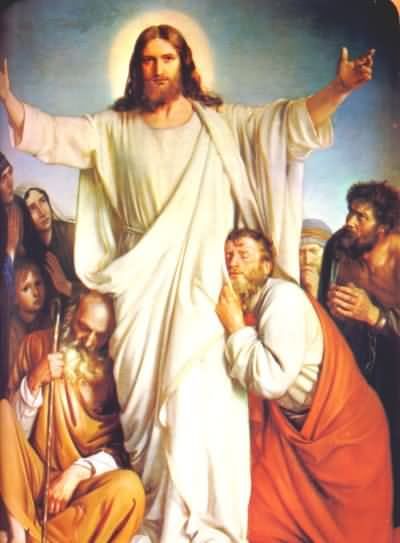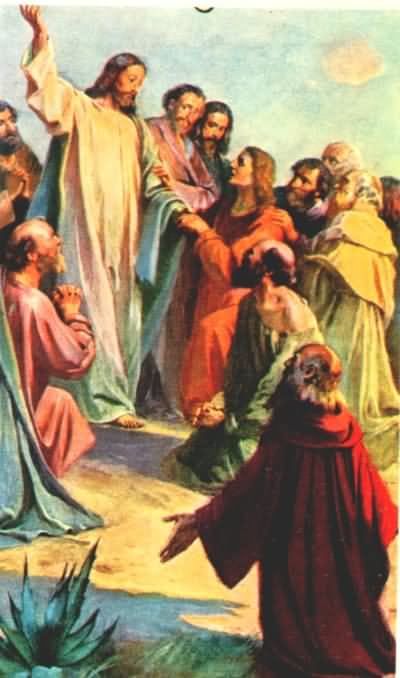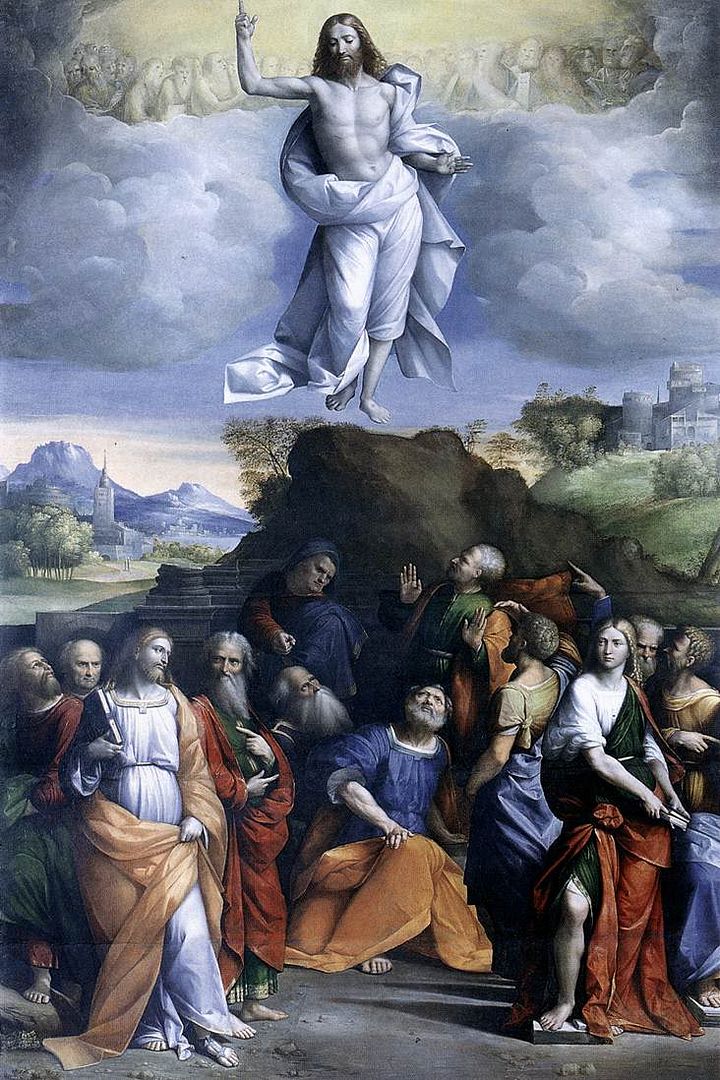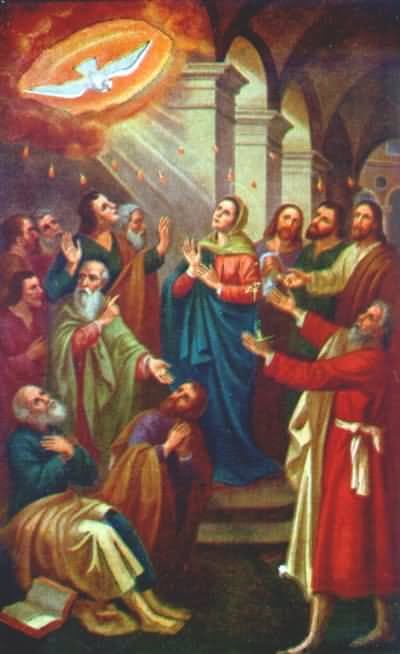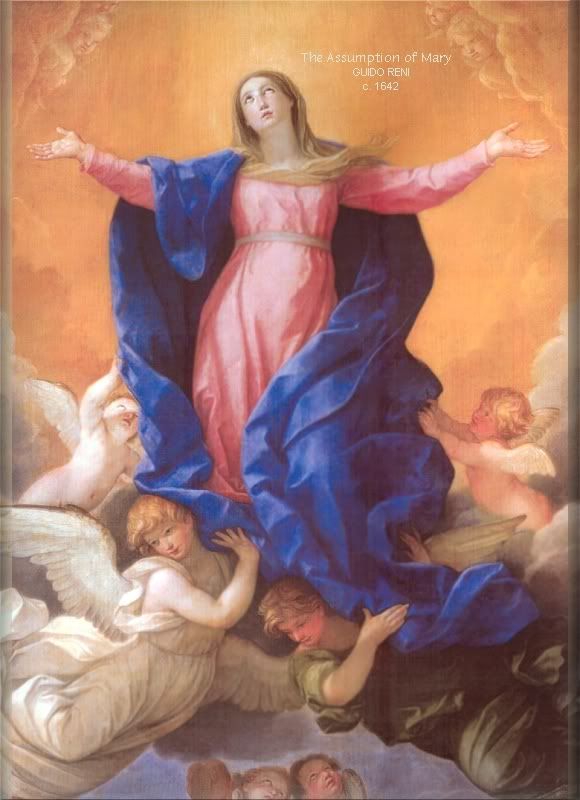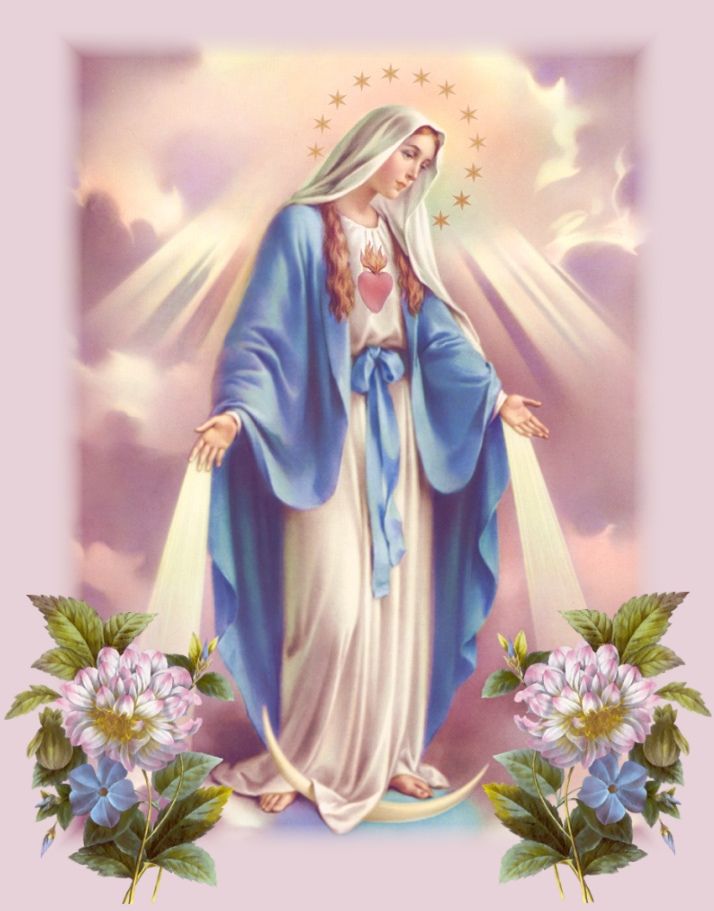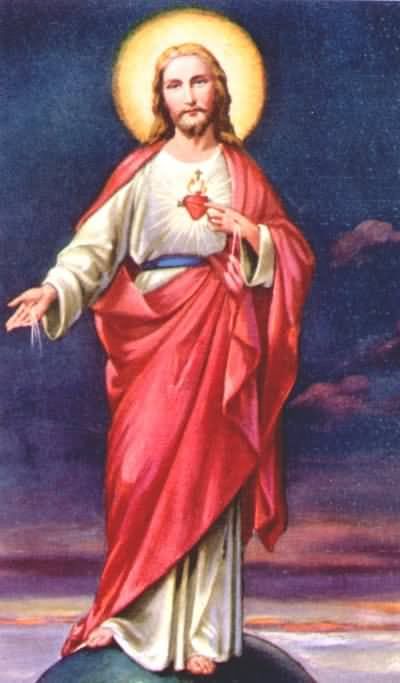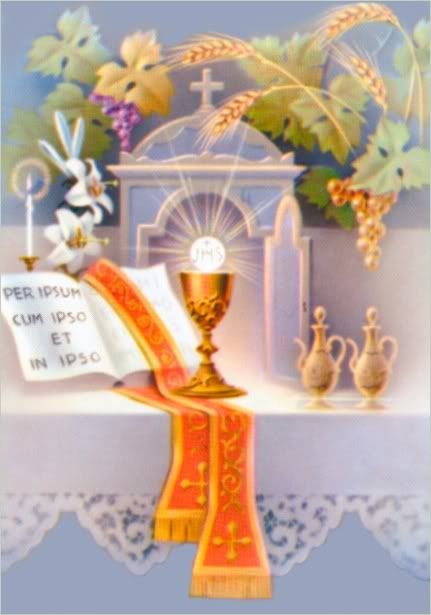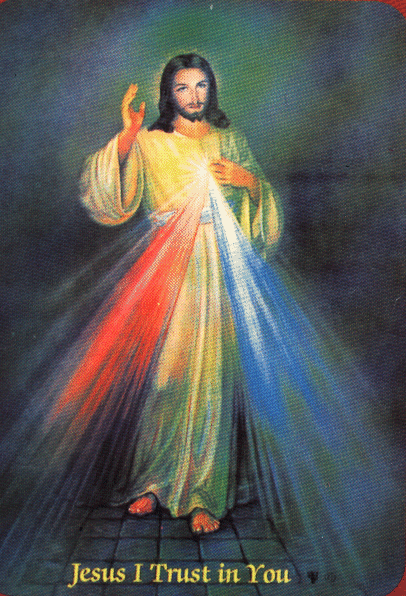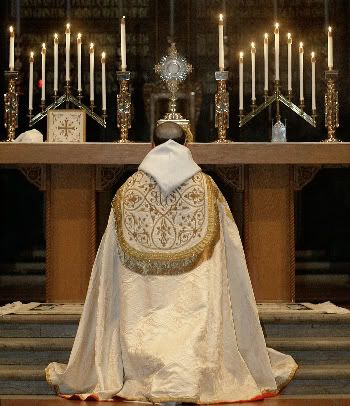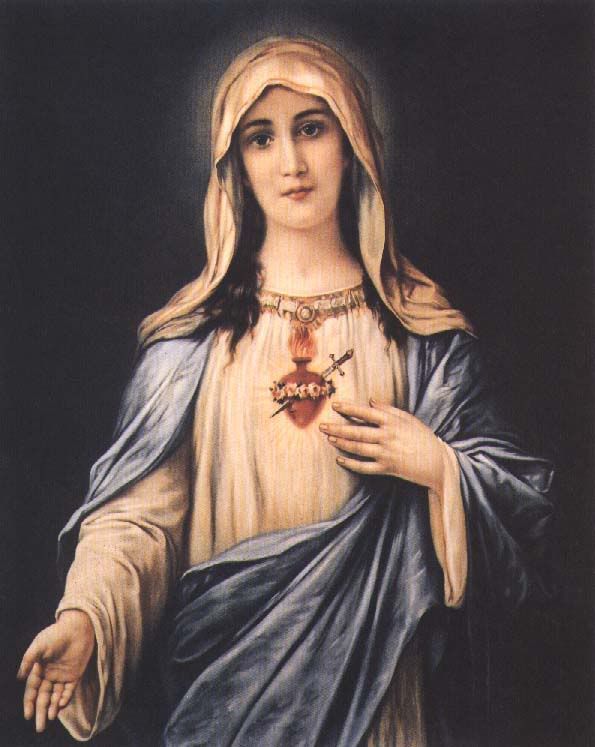Friday, January 19, 2007
Where Did All the Images Go?
Readers browsing through my archives might have trouble finding the images that I have linked to in the past from my Photobucket account.
Here is what is up. That account has a limit of 1,000 images in each album. And I have been adding images in great numbers to the main album, heedless of the consequences. Well, recently, I found that I could add no more, as the 1,000 image limit was reached in the main account. For the last few weeks, I have been posting from a generic sub-album that I created. Now that sub-album is over 10% of its capacity.
But I want to free the main album up, and make it easier for me to find things, without scrolling through a haystack of 1,000 images to find the needle I want. On some computers, believe it or not, asking them to display 1,000 images on a single page is actually quite time-consuming.
So, I am re-organizing it all. As far as I can, every image I have posted over the years, including the banner, links column, and bottom-of-the-page images, is being transferred into a sub-album that is topic-specific. Yeah, that is a lot of work.
But the real pain is that, this breaks the existing links to the images I have posted. Until I go back and edit the html with the new address for the image in the sub-album, no one will be able to see the image. Any image.
I should have everything moved into new sub-albums this weekend. But the process of going back, in some cases over 2 years and thousands of blog entries, and editing the html for every image (if Blogger even lets me go back that far!) will take considerably longer.
And I will move the few items I have posted in other Photobucket accounts (I created numerous ones when I was running up against monthly bandwith issues that have now been resolved) into the main account.
This will take some time, but I think the result is that my Photobucket account will be easier to use. Any new image I post will be in a topic-specific sub-album ab initio. So it is mostly those going back to the archives who will have trouble viewing images.
Thanks for your patience.
Here is what is up. That account has a limit of 1,000 images in each album. And I have been adding images in great numbers to the main album, heedless of the consequences. Well, recently, I found that I could add no more, as the 1,000 image limit was reached in the main account. For the last few weeks, I have been posting from a generic sub-album that I created. Now that sub-album is over 10% of its capacity.
But I want to free the main album up, and make it easier for me to find things, without scrolling through a haystack of 1,000 images to find the needle I want. On some computers, believe it or not, asking them to display 1,000 images on a single page is actually quite time-consuming.
So, I am re-organizing it all. As far as I can, every image I have posted over the years, including the banner, links column, and bottom-of-the-page images, is being transferred into a sub-album that is topic-specific. Yeah, that is a lot of work.
But the real pain is that, this breaks the existing links to the images I have posted. Until I go back and edit the html with the new address for the image in the sub-album, no one will be able to see the image. Any image.
I should have everything moved into new sub-albums this weekend. But the process of going back, in some cases over 2 years and thousands of blog entries, and editing the html for every image (if Blogger even lets me go back that far!) will take considerably longer.
And I will move the few items I have posted in other Photobucket accounts (I created numerous ones when I was running up against monthly bandwith issues that have now been resolved) into the main account.
This will take some time, but I think the result is that my Photobucket account will be easier to use. Any new image I post will be in a topic-specific sub-album ab initio. So it is mostly those going back to the archives who will have trouble viewing images.
Thanks for your patience.
Thursday, January 18, 2007
My Turn To Reprint A Good Article In Full
This appeared in The American Spectator, and was written by Thomas J. Craughwell, of Bethel, Connecticut. It came across my desk via the Save Holy Trinity Yahoo Group
The American Spectator
www.americanprowler .com/dsp_ article.asp? art_id=10884
'Bishop, I Have the Pope on Line One'
By Thomas J. Craughwell
Published 1/17/2007 12:07:27 AM
The other week Pope Benedict XVI phoned a few French bishops, and it
wasn't to find out what they got for Christmas. According to Britain's
Catholic Herald, the pope was doing a bit of old-fashioned
arm-twisting in response to these bishops' very public opposition to
Benedict's intention to grant Catholics more access to the pre-Vatican
II rite of the Mass.
On October 30, 2006, ten French bishops, including the archbishop of
Strasbourg, released a letter expressing their fear that "the
extension of the use of the Roman Missal of 1962 makes the direction
of the Second Vatican Council relative... [and] would also risk
harming unity among priests as well as among the faithful." One of the
signers of the statement, Bishop Andre Lacrampe of Besancon, has been
quoted as saying, "One cannot erase Vatican II with a stroke of the pen."
Is Pope Benedict about to abolish Vatican II? Not quite. What he is
doing, in fact, is implementing one of the council's guarantees,
spelled out in its document on the Mass, Sacrosanctum Consilium, "In
faithful obedience to tradition, the sacred Council declares that holy
Mother Church holds all lawfully acknowledged rites to be of equal
right and dignity; that she wishes to preserve them in the future and
to foster them in every way." Of course, it didn't pan out that way.
In 1969 Pope Paul VI virtually banned the traditional Mass and imposed
on the Church the Novus Ordo Missae, the New Order of the Mass that
has been the norm in Catholic parishes around the globe ever since.
Paul VI's Mass was no simple vernacular translation of the traditional
text; this was a major edit-and-rewrite job that recast the role of
the priest, the people, and even God's place in the liturgical life of
the Catholic Church. It was, in short, a revolution. And as
Robespierre could tell you, once a revolution gets rolling, it's hard
to tell exactly where it will end up.
Once the new Mass was put in place, the progressives went on a rampage
the likes of which the Church had not seen since the Reformation. On
Sunday mornings, while the parish clergy hung out in the rectory,
members of the laity distributed Communion to congregations who were
instructed to stand, not kneel, to receive the Body and Blood of
Christ, and urged to take the Sacred Host, the consecrated bread, in
their hands rather than receive it on their tongue. Then came the
church "wreckovations" -- altars were smashed, communion rails ripped
out, statues hauled away to the dumpster or banished to obscure
corners of the church, and elaborately decorated interiors
whitewashed. The documents of Vatican II did not call for any of these
soul-and-gut wrenching innovations, but when confronted the
progressives claimed that their actions were in keeping with "the
spirit of Vatican II."
The-not-too- subtle message of this revolution was, if the Mass, the
thing the Church held most sacred, could be monkeyed with, then it was
open season on doctrine, discipline, religious authority, religious
vows, church music, education, sexuality, marriage, and life itself.
As the Catholic Church sank into chaos, many Catholics jumped ship. A
1958 Gallup poll found that in the United States 75 percent of
Catholics went to Mass every Sunday; today the number has dropped to
25 percent. By the way, on any given Sunday in France, the bishops can
count on seeing about five percent of the population.
MASS ATTENDANCE WAS NOT the only thing that suffered in the upheavals
that followed Vatican II. Today 53 percent of American Catholics
believe that one can have an abortion and still be a good Catholic.
And 70 percent of American Catholics in the 18-44 age group say they
do not believe that the Eucharist is truly the Body and Blood of
Christ, that it is only a symbol of Jesus.
As for religious vocations, the statistics are dire. In 1965, 1,575
new priests were ordained in the United States; in 2002 there were 450
ordinations. In 1965 there were 600 seminaries in the United States;
today there are about 200. In 1965 there 180,000 nuns in the United
States, 104,000 of whom were teaching sisters; in 2002 there were
75,000 sisters, only 8,200 of whom were in the classroom. As for the
famous Christian Brothers who staffed so many Catholic schools, in
1965 there were 912 young men preparing to take their vows; in 2000
there were only seven. (All these numbers come from Kenneth Jones'
Index of Leading Catholic Indicators).
In the aftermath of Vatican II, the Catholic Church has split into
roughly two camps. First, there are the liberals/progressiv es,
bishops, clergy, and laity who see Vatican II as a complete break with
the Church's past, its doctrines as well as its traditions. On the
other side are the conservatives/ traditionalists, those bishops,
priests, and laity who insist that Vatican II must be read in light of
the Church's doctrine and traditions. Until now the progressives have
had the conservatives on the run. But since his election, Benedict XVI
has said openly that Vatican II is just one in a long series of church
councils, and to argue that it swept away everything that came before
it is to mangle the council documents beyond recognition.
Naturally the two factions have aligned themselves with two opposing
schools of theology. The conservatives defend the Church's traditional
God-centered view of the universe. Nothing conveys their perspective
better than the traditional Mass in which the priest, the altar boys,
and the people all face the altar, with the tabernacle that contains
the Host and the crucifix above the altar as the focal points of their
prayers. This God-centered perspective also dominates the conservative
ideas about themselves and how they interact with their neighbors. It
can be summed up in a basic question, "How is one saved?" And the
basic answer is, "By keeping God's commandments. "
THE THEOLOGY OF THE PROGRESSIVES is decidedly man-centered (oops! make
that person-centered) . Again, it starts with the Mass, where the
priest stands at a table facing the congregation (by the way, the
Vatican Council didn't call for that either). The focus then has
become the interplay between the priest and the people, and in all too
many instances priests have found it hard to resist the temptation to
be an entertainer, urged on by his congregation' s appreciative laughs
and rounds of applause that are common these days in forward-thinking
parishes. God is an afterthought in such places. The tabernacle is off
in a side room, usually out of sight, and the crucifix is portable,
carried in at the start of Mass and carried out when it is over -- and
for good reasons: the presence of the Real Presence, the image of
Christ dying on the cross make the "worship space" too churchy, which
could put a damper on the folksy "I'm okay-you're okay-God's okay"
spirit of the congregation. In terms of theology the progressives tend
to be utilitarian: the issues of a celibate clergy, same-sex marriage,
abortion, and euthanasia are difficult and make many people
uncomfortable, so the easiest solution to such thorny issues is to
sanction them all.
Then in 1988 Pope John Paul II threw the conservatives a lifeline,
granting permission (the ecclesiastical term is indult) for priests to
say the traditional Latin rite of the Mass. In a document entitled
Ecclesia Dei (The Church of God), the pope declared, "Respect must
everywhere by shown for the feelings of all those who are attached to
the Latin liturgical tradition by a wide and generous application of
the directives already issued some time ago by the Apostolic See for
the use of the Roman Missal according to the typical edition of 1962."
But there was a hitch: priests who wished to say the old Mass, and
Catholics who wished to attend it, had to apply to their local bishop
for permission. In response to such requests, few bishops could be
described as "generous."
Conservatives cheered when Cardinal Ratzinger became Pope Benedict XVI
because he had written and preached in support of the old Mass and
often celebrated it publicly himself. Ever since the election
conservatives and liberals have been waiting to see what Benedict will
do. Now he is ready to act.
Unlike the implementation of Paul VI's Mass in 1969, Benedict XVI's
decision to take the handcuffs off the old Mass is not a revolution
but a challenge. He is not going to abolish the new Mass. Instead he
is setting up the traditional Mass with its traditional theology as an
alternative to what is available in the typical Catholic parish.
At this writing the document has not been released, and no one at the
Vatican who has read it has leaked its full contents. One thing is
certain, however: With this document the pope is undermining the
monopoly the progressives have had on parish life. For the first time
in a long time Catholics who have clung to the traditional teachings
of the Church and cherished the traditional liturgy will have a place
they can call home.
Thomas J. Craughwell is an author and commentator on Catholic issues.
He lives in Bethel, Connecticut.
The American Spectator
www.americanprowler .com/dsp_ article.asp? art_id=10884
'Bishop, I Have the Pope on Line One'
By Thomas J. Craughwell
Published 1/17/2007 12:07:27 AM
The other week Pope Benedict XVI phoned a few French bishops, and it
wasn't to find out what they got for Christmas. According to Britain's
Catholic Herald, the pope was doing a bit of old-fashioned
arm-twisting in response to these bishops' very public opposition to
Benedict's intention to grant Catholics more access to the pre-Vatican
II rite of the Mass.
On October 30, 2006, ten French bishops, including the archbishop of
Strasbourg, released a letter expressing their fear that "the
extension of the use of the Roman Missal of 1962 makes the direction
of the Second Vatican Council relative... [and] would also risk
harming unity among priests as well as among the faithful." One of the
signers of the statement, Bishop Andre Lacrampe of Besancon, has been
quoted as saying, "One cannot erase Vatican II with a stroke of the pen."
Is Pope Benedict about to abolish Vatican II? Not quite. What he is
doing, in fact, is implementing one of the council's guarantees,
spelled out in its document on the Mass, Sacrosanctum Consilium, "In
faithful obedience to tradition, the sacred Council declares that holy
Mother Church holds all lawfully acknowledged rites to be of equal
right and dignity; that she wishes to preserve them in the future and
to foster them in every way." Of course, it didn't pan out that way.
In 1969 Pope Paul VI virtually banned the traditional Mass and imposed
on the Church the Novus Ordo Missae, the New Order of the Mass that
has been the norm in Catholic parishes around the globe ever since.
Paul VI's Mass was no simple vernacular translation of the traditional
text; this was a major edit-and-rewrite job that recast the role of
the priest, the people, and even God's place in the liturgical life of
the Catholic Church. It was, in short, a revolution. And as
Robespierre could tell you, once a revolution gets rolling, it's hard
to tell exactly where it will end up.
Once the new Mass was put in place, the progressives went on a rampage
the likes of which the Church had not seen since the Reformation. On
Sunday mornings, while the parish clergy hung out in the rectory,
members of the laity distributed Communion to congregations who were
instructed to stand, not kneel, to receive the Body and Blood of
Christ, and urged to take the Sacred Host, the consecrated bread, in
their hands rather than receive it on their tongue. Then came the
church "wreckovations" -- altars were smashed, communion rails ripped
out, statues hauled away to the dumpster or banished to obscure
corners of the church, and elaborately decorated interiors
whitewashed. The documents of Vatican II did not call for any of these
soul-and-gut wrenching innovations, but when confronted the
progressives claimed that their actions were in keeping with "the
spirit of Vatican II."
The-not-too- subtle message of this revolution was, if the Mass, the
thing the Church held most sacred, could be monkeyed with, then it was
open season on doctrine, discipline, religious authority, religious
vows, church music, education, sexuality, marriage, and life itself.
As the Catholic Church sank into chaos, many Catholics jumped ship. A
1958 Gallup poll found that in the United States 75 percent of
Catholics went to Mass every Sunday; today the number has dropped to
25 percent. By the way, on any given Sunday in France, the bishops can
count on seeing about five percent of the population.
MASS ATTENDANCE WAS NOT the only thing that suffered in the upheavals
that followed Vatican II. Today 53 percent of American Catholics
believe that one can have an abortion and still be a good Catholic.
And 70 percent of American Catholics in the 18-44 age group say they
do not believe that the Eucharist is truly the Body and Blood of
Christ, that it is only a symbol of Jesus.
As for religious vocations, the statistics are dire. In 1965, 1,575
new priests were ordained in the United States; in 2002 there were 450
ordinations. In 1965 there were 600 seminaries in the United States;
today there are about 200. In 1965 there 180,000 nuns in the United
States, 104,000 of whom were teaching sisters; in 2002 there were
75,000 sisters, only 8,200 of whom were in the classroom. As for the
famous Christian Brothers who staffed so many Catholic schools, in
1965 there were 912 young men preparing to take their vows; in 2000
there were only seven. (All these numbers come from Kenneth Jones'
Index of Leading Catholic Indicators).
In the aftermath of Vatican II, the Catholic Church has split into
roughly two camps. First, there are the liberals/progressiv es,
bishops, clergy, and laity who see Vatican II as a complete break with
the Church's past, its doctrines as well as its traditions. On the
other side are the conservatives/ traditionalists, those bishops,
priests, and laity who insist that Vatican II must be read in light of
the Church's doctrine and traditions. Until now the progressives have
had the conservatives on the run. But since his election, Benedict XVI
has said openly that Vatican II is just one in a long series of church
councils, and to argue that it swept away everything that came before
it is to mangle the council documents beyond recognition.
Naturally the two factions have aligned themselves with two opposing
schools of theology. The conservatives defend the Church's traditional
God-centered view of the universe. Nothing conveys their perspective
better than the traditional Mass in which the priest, the altar boys,
and the people all face the altar, with the tabernacle that contains
the Host and the crucifix above the altar as the focal points of their
prayers. This God-centered perspective also dominates the conservative
ideas about themselves and how they interact with their neighbors. It
can be summed up in a basic question, "How is one saved?" And the
basic answer is, "By keeping God's commandments. "
THE THEOLOGY OF THE PROGRESSIVES is decidedly man-centered (oops! make
that person-centered) . Again, it starts with the Mass, where the
priest stands at a table facing the congregation (by the way, the
Vatican Council didn't call for that either). The focus then has
become the interplay between the priest and the people, and in all too
many instances priests have found it hard to resist the temptation to
be an entertainer, urged on by his congregation' s appreciative laughs
and rounds of applause that are common these days in forward-thinking
parishes. God is an afterthought in such places. The tabernacle is off
in a side room, usually out of sight, and the crucifix is portable,
carried in at the start of Mass and carried out when it is over -- and
for good reasons: the presence of the Real Presence, the image of
Christ dying on the cross make the "worship space" too churchy, which
could put a damper on the folksy "I'm okay-you're okay-God's okay"
spirit of the congregation. In terms of theology the progressives tend
to be utilitarian: the issues of a celibate clergy, same-sex marriage,
abortion, and euthanasia are difficult and make many people
uncomfortable, so the easiest solution to such thorny issues is to
sanction them all.
Then in 1988 Pope John Paul II threw the conservatives a lifeline,
granting permission (the ecclesiastical term is indult) for priests to
say the traditional Latin rite of the Mass. In a document entitled
Ecclesia Dei (The Church of God), the pope declared, "Respect must
everywhere by shown for the feelings of all those who are attached to
the Latin liturgical tradition by a wide and generous application of
the directives already issued some time ago by the Apostolic See for
the use of the Roman Missal according to the typical edition of 1962."
But there was a hitch: priests who wished to say the old Mass, and
Catholics who wished to attend it, had to apply to their local bishop
for permission. In response to such requests, few bishops could be
described as "generous."
Conservatives cheered when Cardinal Ratzinger became Pope Benedict XVI
because he had written and preached in support of the old Mass and
often celebrated it publicly himself. Ever since the election
conservatives and liberals have been waiting to see what Benedict will
do. Now he is ready to act.
Unlike the implementation of Paul VI's Mass in 1969, Benedict XVI's
decision to take the handcuffs off the old Mass is not a revolution
but a challenge. He is not going to abolish the new Mass. Instead he
is setting up the traditional Mass with its traditional theology as an
alternative to what is available in the typical Catholic parish.
At this writing the document has not been released, and no one at the
Vatican who has read it has leaked its full contents. One thing is
certain, however: With this document the pope is undermining the
monopoly the progressives have had on parish life. For the first time
in a long time Catholics who have clung to the traditional teachings
of the Church and cherished the traditional liturgy will have a place
they can call home.
Thomas J. Craughwell is an author and commentator on Catholic issues.
He lives in Bethel, Connecticut.
Wednesday, January 17, 2007
Blosser 2-For2
For the Fullest And Most Active Participation At Mass...
Watch what goes on at a typical indult traditional Latin Mass.
This is an excellent article that Dr. Blosser reprints in full for very good reason.
I have often noted that the laity at a Latin Mass are more conscious of what is going on in the Mass, are praying the Mass more completely and more devoutly than you will ever see in the ordinary Novus Ordo parish.
People follow along in their missals. They read an excellent translation of the prayers of the Mass as the priest says them. In fact, for the prayers that have not changed, the translation in the old missals is much better and more faithful to the Latin original than the translation in use for the last 37 years.
People have learned by long experience just what is going on in the Mass by the position and gestures of the priest. Many recite the Nicene Creed in Latin, and make all the other Latin responses that are typically reserved for the server. There are all the Signs of the Cross, genuflections, breast-beating during the Confiteor, bowing the head during the Minor Doxology, all of which indicate that the person in the pews is actively participating in the Mass. Then there are the Leonine Prayers after Low Mass, recited in English, and the prayers and hymns of Benediction, some in Latin, and some in English.
How many Novus Ordo parishes have regular Rosary a half hour before Mass, and the Angelus/Regina Caeli just minutes before a Noon Mass?
How many people at a Novus Ordo Mass make use of the excellent prayers before and after Mass that are available in the old standard St. Joseph's Daily Missal? Such prayers are usually nowhere to be seen in a Novus Ordo missalette. How many people at a Novus Ordo Mass, knowing themselves too sinful to actually receive the Blessed Sacrament, make a spiritual communion instead?
How many actually follow the rubrics that call for breast-beating during the Confiteor, bowing at the relevent passage concerning the Incarnation during the Creed, and making the Sign of the Cross after the Confiteor?
It is not that the New Mass is without merit. It is not that it is, spiritually, anthing less than a perfect Sacrifice. But, as it is routinely observed at the parish level, it is lacking aesthetically, and spiritually less fulfilling. Some perfect sacrifies are more pleasing than others to me, at least, if not to God.
One of the brickbats that is often used to belabor the traditional Mass is that it is awash in private devotion, that it lacks community spirit, that the laity are not involved and are alienated from the Mass of the priest.
This article does an excellent job dispelling that myth. What one sees at a typical indult Latin Mass today is, in fact, the full, active, and intelligent participation of the laity as called for by Dom Gueranger, by St. Pius X, by SOG Pius XII, and by Sacrosanctum Concilium. And the intriguing and ironic thing is, it is fuller and more active participation than what you see at most Novus Ordo parishes.
Speaking for myself, when I leave a Novus Ordo Mass, I know I have fulfilled my obligation, am lucky if I heard a good sermon, and know that I have witnessed the miracle of the Bread and Wine becoming the Body and Blood of Christ. And the best experinces I have had in this mode of the Latin Rite is from the Oblates of the Virgin Mary at St. Francis Chapel at Boston's Prudential Center.
But that is about as far as positive feelings go. And often there is the molar-grinding irritation at the ad-libbing of the priest, the hand-holding, at the unauthorized departures from the rubrics, at innovations like liturgical dance, the "greeting ministry," the altar girls, and at the presumptuousness of my fellow congregants (like the people who insist that their hands ought to be at the Orens position during the Pater Noster, when the rubrics reserve that to the celebrant). I shouldn't have to attend a Mass where I just want to yell at the dolts who think they are priests, "Hey! Fold your hands like everybody else, unless you have been ordained a priest!!!"
When I leave a Latin Mass, I feel as though I have had a deep spiritual encounter with our Lord in the Blessed Sacrament (whether I receive or not). I feel as if those around me are sharing in the grace pouring from the Mass. I feel that I have participated in a meaningful way in something far greater than I am, something that connects me to those who have gone before me in the Faith, and something that more effectively conduces to the salvation of my soul, and the souls of others. And I know that I am not alone in feeling this way.
This is an excellent article that Dr. Blosser reprints in full for very good reason.
I have often noted that the laity at a Latin Mass are more conscious of what is going on in the Mass, are praying the Mass more completely and more devoutly than you will ever see in the ordinary Novus Ordo parish.
People follow along in their missals. They read an excellent translation of the prayers of the Mass as the priest says them. In fact, for the prayers that have not changed, the translation in the old missals is much better and more faithful to the Latin original than the translation in use for the last 37 years.
People have learned by long experience just what is going on in the Mass by the position and gestures of the priest. Many recite the Nicene Creed in Latin, and make all the other Latin responses that are typically reserved for the server. There are all the Signs of the Cross, genuflections, breast-beating during the Confiteor, bowing the head during the Minor Doxology, all of which indicate that the person in the pews is actively participating in the Mass. Then there are the Leonine Prayers after Low Mass, recited in English, and the prayers and hymns of Benediction, some in Latin, and some in English.
How many Novus Ordo parishes have regular Rosary a half hour before Mass, and the Angelus/Regina Caeli just minutes before a Noon Mass?
How many people at a Novus Ordo Mass make use of the excellent prayers before and after Mass that are available in the old standard St. Joseph's Daily Missal? Such prayers are usually nowhere to be seen in a Novus Ordo missalette. How many people at a Novus Ordo Mass, knowing themselves too sinful to actually receive the Blessed Sacrament, make a spiritual communion instead?
How many actually follow the rubrics that call for breast-beating during the Confiteor, bowing at the relevent passage concerning the Incarnation during the Creed, and making the Sign of the Cross after the Confiteor?
It is not that the New Mass is without merit. It is not that it is, spiritually, anthing less than a perfect Sacrifice. But, as it is routinely observed at the parish level, it is lacking aesthetically, and spiritually less fulfilling. Some perfect sacrifies are more pleasing than others to me, at least, if not to God.
One of the brickbats that is often used to belabor the traditional Mass is that it is awash in private devotion, that it lacks community spirit, that the laity are not involved and are alienated from the Mass of the priest.
This article does an excellent job dispelling that myth. What one sees at a typical indult Latin Mass today is, in fact, the full, active, and intelligent participation of the laity as called for by Dom Gueranger, by St. Pius X, by SOG Pius XII, and by Sacrosanctum Concilium. And the intriguing and ironic thing is, it is fuller and more active participation than what you see at most Novus Ordo parishes.
Speaking for myself, when I leave a Novus Ordo Mass, I know I have fulfilled my obligation, am lucky if I heard a good sermon, and know that I have witnessed the miracle of the Bread and Wine becoming the Body and Blood of Christ. And the best experinces I have had in this mode of the Latin Rite is from the Oblates of the Virgin Mary at St. Francis Chapel at Boston's Prudential Center.
But that is about as far as positive feelings go. And often there is the molar-grinding irritation at the ad-libbing of the priest, the hand-holding, at the unauthorized departures from the rubrics, at innovations like liturgical dance, the "greeting ministry," the altar girls, and at the presumptuousness of my fellow congregants (like the people who insist that their hands ought to be at the Orens position during the Pater Noster, when the rubrics reserve that to the celebrant). I shouldn't have to attend a Mass where I just want to yell at the dolts who think they are priests, "Hey! Fold your hands like everybody else, unless you have been ordained a priest!!!"
When I leave a Latin Mass, I feel as though I have had a deep spiritual encounter with our Lord in the Blessed Sacrament (whether I receive or not). I feel as if those around me are sharing in the grace pouring from the Mass. I feel that I have participated in a meaningful way in something far greater than I am, something that connects me to those who have gone before me in the Faith, and something that more effectively conduces to the salvation of my soul, and the souls of others. And I know that I am not alone in feeling this way.
Tuesday, January 16, 2007
Looking Ahead
I must admit that I have begun to think about Lent, which begins in about a month. And with thoughts of Lent, come thoughts of the Passion.
Here are two views of the Instruments of the Passion to tide you over until I feel like posting more:

From Bishop Francesco Gonzaga of Mantua's (1546-1620)De origine seraphicae religionis Fra[n]ciscanae
published in Rome,1587.

Instruments of the Passion from the outside of St. Conrad's church Altötting, Bavaria (1650s). Via Laus Crucis
Here are two views of the Instruments of the Passion to tide you over until I feel like posting more:

From Bishop Francesco Gonzaga of Mantua's (1546-1620)De origine seraphicae religionis Fra[n]ciscanae
published in Rome,1587.

Instruments of the Passion from the outside of St. Conrad's church Altötting, Bavaria (1650s). Via Laus Crucis
Winter Arrives In Boston
Winter has been amazingly mild so far. There have been just a few days that were cold, and there had been no dreaded snow or ice. Winter could stay like that right through until spring, as far as I am concerned. With my bad knees liable to dislocation on snow or ice, and my increasingly bad asthma and sinus situation that disappears in the mild weather, Winter can be all March and April weather and no typical January or February weather.
But the forecasters say our lucky streak is going to end this afternoon as a cold front comes through, and tomorrow's temps may not reach 20 F. And we probably won't even see 40 F for a few weeks after that.
Typically, the very worst of the Winter's snow and cold comes between the 10th of January and the 20th of February. And while March can be cold and snowy, it is more typically milder and rainy.
But there is hope. The lengthening afternoon sunlight is beginning to be noticed. Around Christmas, the sun was setting at approximately 4:15 in the afternoon. Today it will set at 4:38.
As you are probably aware, we don't have to wait so long for Daylight Savings Time this year as in years past. By law, the time for it has been changed, so that instead of the first Sunday in April, we turn the clocks 1 hour ahead on the second Sunday in March. And when we turn them back, we do so on the first Sunday in November, rather than on the last Sunday in October.
So we will be enjoying the benefits of more afternoon sunlight just before the Vernal Equinox, and long before Easter (which means Easter Vigil Masses may have to start later, so that they start in darkness).
But the forecasters say our lucky streak is going to end this afternoon as a cold front comes through, and tomorrow's temps may not reach 20 F. And we probably won't even see 40 F for a few weeks after that.
Typically, the very worst of the Winter's snow and cold comes between the 10th of January and the 20th of February. And while March can be cold and snowy, it is more typically milder and rainy.
But there is hope. The lengthening afternoon sunlight is beginning to be noticed. Around Christmas, the sun was setting at approximately 4:15 in the afternoon. Today it will set at 4:38.
As you are probably aware, we don't have to wait so long for Daylight Savings Time this year as in years past. By law, the time for it has been changed, so that instead of the first Sunday in April, we turn the clocks 1 hour ahead on the second Sunday in March. And when we turn them back, we do so on the first Sunday in November, rather than on the last Sunday in October.
So we will be enjoying the benefits of more afternoon sunlight just before the Vernal Equinox, and long before Easter (which means Easter Vigil Masses may have to start later, so that they start in darkness).
Monday, January 15, 2007
How Much Is Your Blog Worth?
There must be a lot of people brighter than I am, who are able to assign a monetary value to blogs. There is some sort of management game which rates blogs as if they were a company with stock. I have never been able to figure out why Recta Ratio is rated the way it is in that game.
Now, there is a do-hickey I found at some other blog, which says this blog is worth over $95,000! I am rolling on the floor laughing at this. Since Recta Ratio is entirely dependant on me, my skills, my reading, my experience, my writing, it has no value on an open market. To sell it without me would be meaningless, unless I were selling it to a clone of myself.
Gosh, $95,000! I'm very perplexed, and very amused. I've never made a penny off this blog, and were I to find someone stupid enough to pay $95,000 for it, he would be buying a mere shell. But no one would be that stupid as to buy this or any other blog.
I wonder if that includes all six Yahoo Groups, or just the blog! ROFLMAO!!!!
Now, there is a do-hickey I found at some other blog, which says this blog is worth over $95,000! I am rolling on the floor laughing at this. Since Recta Ratio is entirely dependant on me, my skills, my reading, my experience, my writing, it has no value on an open market. To sell it without me would be meaningless, unless I were selling it to a clone of myself.

My blog is worth $95,971.80.
How much is your blog worth?
Gosh, $95,000! I'm very perplexed, and very amused. I've never made a penny off this blog, and were I to find someone stupid enough to pay $95,000 for it, he would be buying a mere shell. But no one would be that stupid as to buy this or any other blog.
I wonder if that includes all six Yahoo Groups, or just the blog! ROFLMAO!!!!
Exciting Pats' Win
New England's own Patriots came from behind to tie the San Diego Chargers, then go ahead by a field goal with just over a minute left. San Diego made a glorious last effort, but their attempt to kick a very long field goal with seconds remaining failed, and the Patriots stayed alive in the playoffs, to face the Colts next weekend.
Now the Colts were well-nigh unstoppable this season, and it is a blessing for the Patriots that they are not in the AFC East (because they would have taken that title, relgating the Pats to Wild Card at best). So this game is shaping up to be very interesting. Most people think the Colts will be the Super Bowl Champion this year, but the Pats have a lot of momentum going for them, plus a core of 10 players who have won 3 Super Bowls.
Now the Colts were well-nigh unstoppable this season, and it is a blessing for the Patriots that they are not in the AFC East (because they would have taken that title, relgating the Pats to Wild Card at best). So this game is shaping up to be very interesting. Most people think the Colts will be the Super Bowl Champion this year, but the Pats have a lot of momentum going for them, plus a core of 10 players who have won 3 Super Bowls.
Sunday, January 14, 2007
Great New Church
St. Raymond of Penafort, Fairfax Station Virginia
Via The Shrine of the Holy Whapping

An encouraging sign.
Via The Shrine of the Holy Whapping

An encouraging sign.
The Second Sunday After Epiphany
From The Liturgical Year, by Abbot Prosper Gueranger, OSB
THE third Mystery of the Epiphany shows us the completion of the merciful designs of God upon the world, at the same time that it manifests to us, for the third time, the glory of our Lord and Saviour, Jesus Christ. The star has led the soul to faith; the sanctified Waters of the Jordan have conferred purity upon her; the Marriage-Feast unites her to her God. We have been considering, during this Octave, the Bridegroom revealing himself to the Spouse; we have heard him calling her to come to him from the heights of Libanus; and now, after having enlightened and purified her, he invites her to the heavenly feast, where she is to receive the Wine of his divine love.
A Feast is prepared; it is a Marriage-Feast; and the Mother of Jesus is present at it, for it is just that, having co-operated in the mystery of the Incarnation of the Word, she should take part in all that her Son does, and in all the favours he bestows on his elect. But, in the midst of the Feast, the Wine fails. Wine is the symbol of Charity or Love, and Charity had failed on the earth; for the Gentiles had never tasted its sweetness; and as to the Synagogue, what had it produced but wild grapes? The True Vine is our Jesus, and he calls himself by that name. He alone could give thatWine which gladdeneth the heart of man; he alone could give us that Chalice which inebriateth, and of which the Royal Psalmist prophesied.
Mary said to Jesus: They have no Wine. It is the office of the Mother of God to tell him of the wants of men, for she is also their Mother. But Jesus answers her in words which are apparently harsh: Woman! what is it to me and to thee? My hour is not yet come. The meaning of these words is, that, in this great Mystery, he was about to act, not as the Son of Mary, but as the Son of God. Later on, the hour will come when, dying upon the Cross, he will do a work, in the presence of his Mother, and he will do it as Man, that is, according to that human nature which he has received from her. Mary at once understands the words of her Son, and she says to the waiters of the Feast, what she is now ever saying to her children: Do whatsoever he shall say to you.
Now, there were six large waterpots of stone there, and they were empty. The World was then in its Sixth Age, as St Augustine and other Holy Doctors tell us. During these six ages, the earth had been awaiting its Saviour, who was to instruct and redeem it. Jesus commands these waterpots to be filled with water; and yet water does not suit the Feast of the Spouse. The figures and the prophecies of the ancient world were this water, and until the opening of the Seventh Age, when Christ, who is the Vine, was to be given to the world, no man had contracted an alliance with the Divine Word.
But, when the Emmanuel came, he had but to say, Now draw out, and the waterpots were seen to be filled with the wine of the New Covenant, the Wine which had been kept to the end. When he assumed our human nature---a nature weak and unstable as water---he effected a change in it; he raised it up even to himself, by making us partakers of the divine nature; he gave us the power to love him, to be united to him, to form that one Body, of which he is the Head, that Church of which he is the Spouse, and which he loved from all eternity, and with such tender love, that he came down from heaven to celebrate his nuptials with her.
St Matthew, the Evangelist of the Humanity of our Lord, has received from the Holy Ghost the commission to announce to us the Mystery of Faith by the star; St Luke, the Evangelist of Jesus' Priesthood, has been selected, by the same Holy Spirit, to instruct us in the Mystery of the Baptism in the Jordan; but the Mystery of the Marriage-Feast was to be revealed to us by the Evangelist John, the Beloved Disciple. He suggests to the Church the object of this third Mystery, by this expression: This beginning of miracles did Jesus in Cana of Galilee, and he MANIFESTED his glory. At Bethlehem, the Gold of the Magi expressed the Divinity of the Babe; at the Jordan, the descent of the Holy Ghost and the voice of the Eternal Father proclaimed Jesus (known to the people as a carpenter of Nazareth) to be the Son of God; at Cana, it is Jesus himself that acts, and he acts as God, for, says St Augustine, he who changed the water into wine in the waterpots could be no other than the same who, every year, works the same miracle in the vine. Hence it was that, from that day, as St John tells us, his disciples believed in him, and the Apostolic College began to be formed.
MASS
The Introit proclaims the joy of this day, which shows us human nature espoused to the Son of the eternal Father. Surely the earth will henceforth surrender itself wholly to the love and praise of this sacred Name which, in the Marriage Feast, has become that of the Sons of Adam.
INTROIT
Omnis terra adoret te, Deus, et psallat tibi: psalmum dicat nomini tuo, Altissime.
Ps. Jubilate Deo omnis terra, psalmum dicite nomini ejus: date gloriam laudi ejus. Gloria Patri. Omnis terra.
Let all the earth adore thee, and sing to thee, O God: let it sing a psalm to thy name, O Most High.
Ps. Shout with joy to God, all the earth, sing ye a psalm to his name; give glory to his praise. Glory be to the Father. Let all the Earth.
This name of Sons of God which has become ours by right through the bond of the sacred nuptials is none other, as Jesus himself tells us in his Beatitudes, than Peace---the Peace of God, ours truly through the action of his grace ever working it out within us. In the Collect Peace again figures as the final end of God's government both in heaven and on earth, likewise as the supreme desire of the Church.
COLLECT
Omnipotens sempiterne Deus, qui cœlestia simul et terrena moderaris: supplicationes populi tui clementer exaudi, et pacem tuam nostris concede temporibus. Per Dominum.
Almighty and Eternal God, supreme Ruler both of heaven and earth, mercifully give ear to the prayers of thy people, and grant us peace in our time. Through, etc.
EPISTLE
Lectio Epistolæ beati Pauli Apostoli ad Romanos.
Cap. XII.
Fratres: Habentes donationes secundum gratiam, quæ data est nobis, differentes: sive prophetiam secundum rationem fidei, sive ministerium in ministrando, sive qui docet in doctrina, qui exhortatur in exhortando, qui tribuit in simplicitate, qui præest in sollicitudine, qui miseretur in hilaritate. Dilectio sine simulatione. Odientes malum, adhærentes bono: Caritate fraternitatis invicem diligentes: Honore invicem prævenientes: Sollicitudine non pigri: Spiritu ferventes: Domino servientes: Spe gaudentes: In tribulatione patientes: Orationi instantes: necessitatibus sanctorum communicantes: Hospitalitatem sectantes. Benedicite persequentibus vos: benedicite et nolite maledicere. Gaudere cum gaudentibus, flere cum flentibus: idipsum invicem sentientes: non alta sapientes, sed humilibus consentientes.
Lesson from the Epistle of St Paul the Apostle to the Romans.
Ch. XII.
Brethren: Having different gifts, according to the grace that is given us, either prophecy, to be used according to the rule of faith: or ministry, in ministering; or he that teacheth, in doctrine; he that exhorteth in exhorting; he that giveth with simplicity; he that ruleth with carefulness; he that sheweth mercy with cheerfulness. Let love be without dissimulation. Hating that which is evil, cleaving to that which is good. Loving one another with the charity of brotherhood: with honour preventing one another. In carefulness not slothful, in spirit fervent: serving the Lord : rejoicing in hope: patient in tribulation: instant in prayer: communicating to the necessities of the saints: pursuing hospitality. Bless them that persecute you: bless and curse not. Rejoice with them that rejoice, weep with them that weep. Being of one mind one towards another, not minding high things, but consenting to the humble.
This peace which characterizes, in the abode of saints, the Sons of God, effects in like measure on earth the oneness of the Bride, that is of the Church: peace it is that makes her to be but one body wherein the many members find their multiplicity upheld and guided by the head, the one lord; their functions, so diverse in themselves, regulated and brought under the rule and love of the Bridegroom, Christ Jesus. The Epistle which has just been read sets before us the different operations of this peace which has as its ruling motive Charity, the Queen of virtues, and which is so essential to Christianity; the Apostle specifies in detail its forms and conditions and adapts its practice to every social condition and circumstance of life. Of such value does the Church judge these considerations, that, on the following Sunday, she resumes the text of the Apostle where today she has interrupted it.
Far from a divine life in the peace of God which was its precious gift, the human race incurred death with its penalty of separation. Let us then in the Gradual sing of this wonder that has been wrought in our midst, and with the angelic choirs exalt the Lord in praise and admiration.
GRADUAL
Misit Dominus verbum suum, et sanavit eos: et eripuit eos de interitu eorum.
V. Confiteantur Domino misericordiæ ejus, et mirabilia ejus filiis hominum. Alleluia, alleluia.
V. Laudate Deum omnes Angeli ejus: laudate eum omnes virtutes ejus. Alleluia.
The Lord sent his word and healed them: and delivered them out of their distresses.
V. Let the mercies of the Lord give glory to him: and his wonderful works to the children of men. Alleluia, alleluia.
V. Praise ye the Lord, all his angels, praise him all his hosts. Alleluia.
GOSPEL
Sequentia sancti Evangelii secundum Joannem.
Cap. II.
In illo tempore: Nuptiæ factæ sunt in Cana Galilææ, et erat Mater Jesu ibi. Vocatus est autem et Jesus et discipuli ejus ad nuptias. Et deficiente vino, dicit Mater Jesu ad eum: Vinum non habent. Et dicit ei Jesus: Quid mihi et tibi est, mulier? nondum venit hora mea. Dicit Mater ejus ministris: Quodcumque dixerit vobis, facite. Erant autem ibi lapideæ hydridæ sex, positæ secundum purificationem Judæorum, capientes singulæ metretas binas vel ternas. Dicit eis Jesus: Implete hydrias aqua. Et impleverunt eas usque ad summum. Et dicit eis Jesus: Haurite nunc, et ferte architriclino. Et tulerunt. Ut autem gustavit architriclinus aquam vinum factam, et non sciebat unde esset, ministri autem sciebant qui hauserant aquam; vocat sponsum architriclinus, et dicit ei: Omnis homo primum bonum vinum ponit, et cum inebriati fuerint, tunc id quod deterius est; tu autem servasti bonum vinum usque adhuc. Hoc fecit initium signorum Jesus in Cana Galilææ, et manifestavit gloriam suam, et crediderunt in eum discipuli ejus.
Sequel of the holy Gospel according to John.
Ch. II.
At that time, there was a marriage in Cana of Galilee; and the Mother of Jesus was there. And Jesus also was invited, and his disciples to the marriage. And the wine failing, the Mother of Jesus saith to him, They have no wine. And Jesus saith to her, Woman, what is it to me and to thee? my hour is not yet come. His Mother saith to the waiters, Whatsoever he shall say to you, do ye. Now there were set there six waterpots of stone; according to the manner of the purifying of the Jews, containing two or three measures apiece. Jesus saith to them, Fill the waterpots with water. And they filled them up to the brim. And Jesus saith to them, Draw out now, and carry to the chief steward of the feast: and they carried it. And when the chief steward had tasted the water made wine, and knew not whence it was, but the waiters knew who had drawn the water; the chief steward calleth the bridegroom, and saith to him, Every man at first setteth forth good wine, and when men have well drunk, then that which is worse: but thou hast kept the good wine until now. This beginning of miracles did Jesus in Cana of Galilee, and manifested his glory, and his disciples believed in him.
O the wonderful dignity of man! God has vouchsafed, says the Apostle, to show the riches of his glory on the vessels of mercy, which had no claim to, nay, were unworthy of such an honour. Jesus bids the waiters fill them with water and the water of Baptism purifies us; but, not satisfied with this, he fills these vessels, even to the brim, with that heavenly and new Wine, which was not to be drunk save in the kingdom of his Father. Thus, divine Charity, which dwells in the Sacrament of Love, is communicated to us; and that we might not be unworthy of the espousals with himself, to which he called us, he raises us up even to himself. Let us, therefore, prepare our souls for this wonderful union, and, according to the advice of the Apostle, let us labour to present them to our Jesus with such purity as to resemble that chaste Virgin, who was presented to the spotless Lamb.
During the Offertory, the Church resumes her songs of joy and gives free course to her holy transports. All faithful souls are invited by her to the celebration of this adorable Mystery, the intimate union of man with God.
OFFERTORY
Jubilate Deo universa terra: psalmum dicite nomini ejus, venite et audite, et narrabo vobis omnes qui timetis Deum, quanta fecit Dominus animæ meæ. Alleluia.
Shout with joy to God, all the earth, sing ye a psalm to his name. Come and hear, all ye who fear God, and I will tell you what great things he hath done for my soul. Alleluia.
SECRET
Oblata, Domine, munera sanctifica: nosque a peccatorum nostrorum maculis emunda. Per Dominum.
Sanctify, O Lord, our offerings, and cleanse us from the stains of our sins. Through, etc.
The Communion Antiphon recalls once more the miracle of the changing of the water into wine. This was only a dim figure of that wondrous transformation which is accomplished on our altars, only a symbol of that divine Sacrament, the food of our souls whereby, in an unspeakable way, is realized our union with God.
COMMUNION
Dicit Dominus: Implete hydrias aqua et ferte architriclino. Cum gustasset architriclinus aquam vinum factam, dicit sponso: Servasti vinum bonum usque adduc. Hoc signum fecit Jesus primum coram discipulis suis.
The Lord saith: Fill the waterpots with water and carry to the chief steward of the feast. When the chief steward had tasted the water made wine, he said to the bridegroom : Thou hast kept the good wine until now. This beginning of miracles did Jesus before his disciples.
POSTCOMMUNION
Augeatur in nobis, quæsumus Domine, tuæ virtutis operatio: ut divinis vegetati sacramentis, ad eorum promissa capienda tuo munere præparemur. Per Dominum.
May the efficacy of thy power, O Lord, be increased in us, that being fed with thy divine sacraments, we may, through thy bounty, be prepared to receive what they promise. Through, etc.

Gerard David, The Wedding At Cana
THE third Mystery of the Epiphany shows us the completion of the merciful designs of God upon the world, at the same time that it manifests to us, for the third time, the glory of our Lord and Saviour, Jesus Christ. The star has led the soul to faith; the sanctified Waters of the Jordan have conferred purity upon her; the Marriage-Feast unites her to her God. We have been considering, during this Octave, the Bridegroom revealing himself to the Spouse; we have heard him calling her to come to him from the heights of Libanus; and now, after having enlightened and purified her, he invites her to the heavenly feast, where she is to receive the Wine of his divine love.
A Feast is prepared; it is a Marriage-Feast; and the Mother of Jesus is present at it, for it is just that, having co-operated in the mystery of the Incarnation of the Word, she should take part in all that her Son does, and in all the favours he bestows on his elect. But, in the midst of the Feast, the Wine fails. Wine is the symbol of Charity or Love, and Charity had failed on the earth; for the Gentiles had never tasted its sweetness; and as to the Synagogue, what had it produced but wild grapes? The True Vine is our Jesus, and he calls himself by that name. He alone could give thatWine which gladdeneth the heart of man; he alone could give us that Chalice which inebriateth, and of which the Royal Psalmist prophesied.
Mary said to Jesus: They have no Wine. It is the office of the Mother of God to tell him of the wants of men, for she is also their Mother. But Jesus answers her in words which are apparently harsh: Woman! what is it to me and to thee? My hour is not yet come. The meaning of these words is, that, in this great Mystery, he was about to act, not as the Son of Mary, but as the Son of God. Later on, the hour will come when, dying upon the Cross, he will do a work, in the presence of his Mother, and he will do it as Man, that is, according to that human nature which he has received from her. Mary at once understands the words of her Son, and she says to the waiters of the Feast, what she is now ever saying to her children: Do whatsoever he shall say to you.
Now, there were six large waterpots of stone there, and they were empty. The World was then in its Sixth Age, as St Augustine and other Holy Doctors tell us. During these six ages, the earth had been awaiting its Saviour, who was to instruct and redeem it. Jesus commands these waterpots to be filled with water; and yet water does not suit the Feast of the Spouse. The figures and the prophecies of the ancient world were this water, and until the opening of the Seventh Age, when Christ, who is the Vine, was to be given to the world, no man had contracted an alliance with the Divine Word.
But, when the Emmanuel came, he had but to say, Now draw out, and the waterpots were seen to be filled with the wine of the New Covenant, the Wine which had been kept to the end. When he assumed our human nature---a nature weak and unstable as water---he effected a change in it; he raised it up even to himself, by making us partakers of the divine nature; he gave us the power to love him, to be united to him, to form that one Body, of which he is the Head, that Church of which he is the Spouse, and which he loved from all eternity, and with such tender love, that he came down from heaven to celebrate his nuptials with her.
St Matthew, the Evangelist of the Humanity of our Lord, has received from the Holy Ghost the commission to announce to us the Mystery of Faith by the star; St Luke, the Evangelist of Jesus' Priesthood, has been selected, by the same Holy Spirit, to instruct us in the Mystery of the Baptism in the Jordan; but the Mystery of the Marriage-Feast was to be revealed to us by the Evangelist John, the Beloved Disciple. He suggests to the Church the object of this third Mystery, by this expression: This beginning of miracles did Jesus in Cana of Galilee, and he MANIFESTED his glory. At Bethlehem, the Gold of the Magi expressed the Divinity of the Babe; at the Jordan, the descent of the Holy Ghost and the voice of the Eternal Father proclaimed Jesus (known to the people as a carpenter of Nazareth) to be the Son of God; at Cana, it is Jesus himself that acts, and he acts as God, for, says St Augustine, he who changed the water into wine in the waterpots could be no other than the same who, every year, works the same miracle in the vine. Hence it was that, from that day, as St John tells us, his disciples believed in him, and the Apostolic College began to be formed.
MASS
The Introit proclaims the joy of this day, which shows us human nature espoused to the Son of the eternal Father. Surely the earth will henceforth surrender itself wholly to the love and praise of this sacred Name which, in the Marriage Feast, has become that of the Sons of Adam.
INTROIT
Omnis terra adoret te, Deus, et psallat tibi: psalmum dicat nomini tuo, Altissime.
Ps. Jubilate Deo omnis terra, psalmum dicite nomini ejus: date gloriam laudi ejus. Gloria Patri. Omnis terra.
Let all the earth adore thee, and sing to thee, O God: let it sing a psalm to thy name, O Most High.
Ps. Shout with joy to God, all the earth, sing ye a psalm to his name; give glory to his praise. Glory be to the Father. Let all the Earth.
This name of Sons of God which has become ours by right through the bond of the sacred nuptials is none other, as Jesus himself tells us in his Beatitudes, than Peace---the Peace of God, ours truly through the action of his grace ever working it out within us. In the Collect Peace again figures as the final end of God's government both in heaven and on earth, likewise as the supreme desire of the Church.
COLLECT
Omnipotens sempiterne Deus, qui cœlestia simul et terrena moderaris: supplicationes populi tui clementer exaudi, et pacem tuam nostris concede temporibus. Per Dominum.
Almighty and Eternal God, supreme Ruler both of heaven and earth, mercifully give ear to the prayers of thy people, and grant us peace in our time. Through, etc.
EPISTLE
Lectio Epistolæ beati Pauli Apostoli ad Romanos.
Cap. XII.
Fratres: Habentes donationes secundum gratiam, quæ data est nobis, differentes: sive prophetiam secundum rationem fidei, sive ministerium in ministrando, sive qui docet in doctrina, qui exhortatur in exhortando, qui tribuit in simplicitate, qui præest in sollicitudine, qui miseretur in hilaritate. Dilectio sine simulatione. Odientes malum, adhærentes bono: Caritate fraternitatis invicem diligentes: Honore invicem prævenientes: Sollicitudine non pigri: Spiritu ferventes: Domino servientes: Spe gaudentes: In tribulatione patientes: Orationi instantes: necessitatibus sanctorum communicantes: Hospitalitatem sectantes. Benedicite persequentibus vos: benedicite et nolite maledicere. Gaudere cum gaudentibus, flere cum flentibus: idipsum invicem sentientes: non alta sapientes, sed humilibus consentientes.
Lesson from the Epistle of St Paul the Apostle to the Romans.
Ch. XII.
Brethren: Having different gifts, according to the grace that is given us, either prophecy, to be used according to the rule of faith: or ministry, in ministering; or he that teacheth, in doctrine; he that exhorteth in exhorting; he that giveth with simplicity; he that ruleth with carefulness; he that sheweth mercy with cheerfulness. Let love be without dissimulation. Hating that which is evil, cleaving to that which is good. Loving one another with the charity of brotherhood: with honour preventing one another. In carefulness not slothful, in spirit fervent: serving the Lord : rejoicing in hope: patient in tribulation: instant in prayer: communicating to the necessities of the saints: pursuing hospitality. Bless them that persecute you: bless and curse not. Rejoice with them that rejoice, weep with them that weep. Being of one mind one towards another, not minding high things, but consenting to the humble.
This peace which characterizes, in the abode of saints, the Sons of God, effects in like measure on earth the oneness of the Bride, that is of the Church: peace it is that makes her to be but one body wherein the many members find their multiplicity upheld and guided by the head, the one lord; their functions, so diverse in themselves, regulated and brought under the rule and love of the Bridegroom, Christ Jesus. The Epistle which has just been read sets before us the different operations of this peace which has as its ruling motive Charity, the Queen of virtues, and which is so essential to Christianity; the Apostle specifies in detail its forms and conditions and adapts its practice to every social condition and circumstance of life. Of such value does the Church judge these considerations, that, on the following Sunday, she resumes the text of the Apostle where today she has interrupted it.
Far from a divine life in the peace of God which was its precious gift, the human race incurred death with its penalty of separation. Let us then in the Gradual sing of this wonder that has been wrought in our midst, and with the angelic choirs exalt the Lord in praise and admiration.
GRADUAL
Misit Dominus verbum suum, et sanavit eos: et eripuit eos de interitu eorum.
V. Confiteantur Domino misericordiæ ejus, et mirabilia ejus filiis hominum. Alleluia, alleluia.
V. Laudate Deum omnes Angeli ejus: laudate eum omnes virtutes ejus. Alleluia.
The Lord sent his word and healed them: and delivered them out of their distresses.
V. Let the mercies of the Lord give glory to him: and his wonderful works to the children of men. Alleluia, alleluia.
V. Praise ye the Lord, all his angels, praise him all his hosts. Alleluia.
GOSPEL
Sequentia sancti Evangelii secundum Joannem.
Cap. II.
In illo tempore: Nuptiæ factæ sunt in Cana Galilææ, et erat Mater Jesu ibi. Vocatus est autem et Jesus et discipuli ejus ad nuptias. Et deficiente vino, dicit Mater Jesu ad eum: Vinum non habent. Et dicit ei Jesus: Quid mihi et tibi est, mulier? nondum venit hora mea. Dicit Mater ejus ministris: Quodcumque dixerit vobis, facite. Erant autem ibi lapideæ hydridæ sex, positæ secundum purificationem Judæorum, capientes singulæ metretas binas vel ternas. Dicit eis Jesus: Implete hydrias aqua. Et impleverunt eas usque ad summum. Et dicit eis Jesus: Haurite nunc, et ferte architriclino. Et tulerunt. Ut autem gustavit architriclinus aquam vinum factam, et non sciebat unde esset, ministri autem sciebant qui hauserant aquam; vocat sponsum architriclinus, et dicit ei: Omnis homo primum bonum vinum ponit, et cum inebriati fuerint, tunc id quod deterius est; tu autem servasti bonum vinum usque adhuc. Hoc fecit initium signorum Jesus in Cana Galilææ, et manifestavit gloriam suam, et crediderunt in eum discipuli ejus.
Sequel of the holy Gospel according to John.
Ch. II.
At that time, there was a marriage in Cana of Galilee; and the Mother of Jesus was there. And Jesus also was invited, and his disciples to the marriage. And the wine failing, the Mother of Jesus saith to him, They have no wine. And Jesus saith to her, Woman, what is it to me and to thee? my hour is not yet come. His Mother saith to the waiters, Whatsoever he shall say to you, do ye. Now there were set there six waterpots of stone; according to the manner of the purifying of the Jews, containing two or three measures apiece. Jesus saith to them, Fill the waterpots with water. And they filled them up to the brim. And Jesus saith to them, Draw out now, and carry to the chief steward of the feast: and they carried it. And when the chief steward had tasted the water made wine, and knew not whence it was, but the waiters knew who had drawn the water; the chief steward calleth the bridegroom, and saith to him, Every man at first setteth forth good wine, and when men have well drunk, then that which is worse: but thou hast kept the good wine until now. This beginning of miracles did Jesus in Cana of Galilee, and manifested his glory, and his disciples believed in him.
O the wonderful dignity of man! God has vouchsafed, says the Apostle, to show the riches of his glory on the vessels of mercy, which had no claim to, nay, were unworthy of such an honour. Jesus bids the waiters fill them with water and the water of Baptism purifies us; but, not satisfied with this, he fills these vessels, even to the brim, with that heavenly and new Wine, which was not to be drunk save in the kingdom of his Father. Thus, divine Charity, which dwells in the Sacrament of Love, is communicated to us; and that we might not be unworthy of the espousals with himself, to which he called us, he raises us up even to himself. Let us, therefore, prepare our souls for this wonderful union, and, according to the advice of the Apostle, let us labour to present them to our Jesus with such purity as to resemble that chaste Virgin, who was presented to the spotless Lamb.
During the Offertory, the Church resumes her songs of joy and gives free course to her holy transports. All faithful souls are invited by her to the celebration of this adorable Mystery, the intimate union of man with God.
OFFERTORY
Jubilate Deo universa terra: psalmum dicite nomini ejus, venite et audite, et narrabo vobis omnes qui timetis Deum, quanta fecit Dominus animæ meæ. Alleluia.
Shout with joy to God, all the earth, sing ye a psalm to his name. Come and hear, all ye who fear God, and I will tell you what great things he hath done for my soul. Alleluia.
SECRET
Oblata, Domine, munera sanctifica: nosque a peccatorum nostrorum maculis emunda. Per Dominum.
Sanctify, O Lord, our offerings, and cleanse us from the stains of our sins. Through, etc.
The Communion Antiphon recalls once more the miracle of the changing of the water into wine. This was only a dim figure of that wondrous transformation which is accomplished on our altars, only a symbol of that divine Sacrament, the food of our souls whereby, in an unspeakable way, is realized our union with God.
COMMUNION
Dicit Dominus: Implete hydrias aqua et ferte architriclino. Cum gustasset architriclinus aquam vinum factam, dicit sponso: Servasti vinum bonum usque adduc. Hoc signum fecit Jesus primum coram discipulis suis.
The Lord saith: Fill the waterpots with water and carry to the chief steward of the feast. When the chief steward had tasted the water made wine, he said to the bridegroom : Thou hast kept the good wine until now. This beginning of miracles did Jesus before his disciples.
POSTCOMMUNION
Augeatur in nobis, quæsumus Domine, tuæ virtutis operatio: ut divinis vegetati sacramentis, ad eorum promissa capienda tuo munere præparemur. Per Dominum.
May the efficacy of thy power, O Lord, be increased in us, that being fed with thy divine sacraments, we may, through thy bounty, be prepared to receive what they promise. Through, etc.

Gerard David, The Wedding At Cana
Speaking Of Relics...
Today's Globe has an article on the Archdiocese's glut of sacred relics, and the lack of demand for them.
You know, if the Archdiocese bothered to teach people their Faith properly, there would be no lack of interest in these relics. The indifference even of the priests charged with oversight of these relics is quite manifest in the article. What we need is people in authority who understand the power of a great relic to stir faith and devotion, and to teach people about the Faith.
We don't have a lack of interest in relics. We have a lack of interest in preserving and passing on the Faith in the very people most solemnly charged with doing so.
It is nice to read that Cardinal O'Malley has a Padre Pio relic about his neck (cloth touched to blood issuing from his stigmata). But does he often tell people he addresses about it, about how important it is to him, about why St. Pio's stigmata is important, about St. Pio's importance to him as a Capuchin friar?
TEACH!!!!!
You know, if the Archdiocese bothered to teach people their Faith properly, there would be no lack of interest in these relics. The indifference even of the priests charged with oversight of these relics is quite manifest in the article. What we need is people in authority who understand the power of a great relic to stir faith and devotion, and to teach people about the Faith.
We don't have a lack of interest in relics. We have a lack of interest in preserving and passing on the Faith in the very people most solemnly charged with doing so.
It is nice to read that Cardinal O'Malley has a Padre Pio relic about his neck (cloth touched to blood issuing from his stigmata). But does he often tell people he addresses about it, about how important it is to him, about why St. Pio's stigmata is important, about St. Pio's importance to him as a Capuchin friar?
TEACH!!!!!
Catholic Devotions Meme
1. Favorite devotion or prayer to Jesus.
"Lord Jesus Christ, have mercy on me, a sinner."
2. Favorite Marian devotion or prayer.
The Salve Regina. I've learned it in latin. Now I want to learn how to chant it in Latin.
3. Do you wear a scapular or medal?
I wear the brown scapular and the Miraculous Medal.
4. Do you have holy water in your home?
Yes, including water from Lourdes.
5. Do you "offer up" your sufferings?
Yes, though I usually don't remember when I am going through it, but that is what the Morning Offering covers.
6. Do you observe First Fridays and First Saturdays?
Yes, with mixed consistency. Obviously I am devoted to the Two Hearts, but often fail in honoring them properly.
7. Do you go to Eucharistic Adoration? How Frequently?
Yes. I try to observe a Holy Hour before the Blessed Sacrament, either available for Adoration in a monstrance, or reposed in the Tabernacle, every weekday. And If I can schedule to be present at Benediction, so much the better.
8. Are you a Saturday evening Mass person or a Sunday morning Mass person?
I am not a Seventh Day Adventist. Though my parents in the 1970s got me into the habit of Saturday Mass, I have broken that habit, and returned to Sunday only.
9. Do you say prayers at mealtime?
Yes. I am learning the Grace Before Meals in Latin.
10. Favorite saints:
St. Joseph, St. Pio, St. Therese of Lisieux, St. Patrick, St. Jean Vianney, St. Faustina, St. Michael the Archangel, St Alphonsus Liguori.
11. Can you recite the Apostles' Creed by heart?
Yes. And the Nicene Creed.
12. Do you usually say short prayers (aspirations) during the course of the day?
Yes, though not as frequently as I ought.
13. Bonus Question: When you pass by an automobile accident or other serious mishap, do you say a quick prayer for the folks involved?
Yes, I say a Pater Noster for the victims and those aiding them.
Added bonus question: Have you named your Guardian Angel?
No. Objectively, my Guardian Angel has a name, and I just don't know what it is. It would be ridiculous for me to call him one thing for my life, then find out his real name after I die and have to get used to his real name.
Additional extra bonus question: When you pass a Catholic church or graveyard, do you show reverence?
I make the Sign of the Cross as I pass. I see no one else doing this even in the heavily Italian North End, with its 4 Catholic churches. This is a simple recognition of the True Presence that ought to be seriously encouraged by all priests. And don't get me started about the devout people in chapel or church who walk right by the Tabernacle without the slightest reverence, as if it were Good Friday every day of the year (though these people often misguidedly bow or genuflect towards an altar with no Tabernacle!!!!!). They make me want to yell, "Hey, He's over here!" Now the altar may have a relic, but what is the bone of even the greatest, holiest saint, or even a relic of the True Cross compared to the Body, Blood, Soul, and Divinity of Jesus Christ Himself truly, really, and substantially present in the Blessed Sacrament? Bow to the altar, but genuflect and Cross yourself when you pass the Tabernacle.
Anyone who wants to be tagged, consider yourself tagged.
"Lord Jesus Christ, have mercy on me, a sinner."
2. Favorite Marian devotion or prayer.
The Salve Regina. I've learned it in latin. Now I want to learn how to chant it in Latin.
3. Do you wear a scapular or medal?
I wear the brown scapular and the Miraculous Medal.
4. Do you have holy water in your home?
Yes, including water from Lourdes.
5. Do you "offer up" your sufferings?
Yes, though I usually don't remember when I am going through it, but that is what the Morning Offering covers.
6. Do you observe First Fridays and First Saturdays?
Yes, with mixed consistency. Obviously I am devoted to the Two Hearts, but often fail in honoring them properly.
7. Do you go to Eucharistic Adoration? How Frequently?
Yes. I try to observe a Holy Hour before the Blessed Sacrament, either available for Adoration in a monstrance, or reposed in the Tabernacle, every weekday. And If I can schedule to be present at Benediction, so much the better.
8. Are you a Saturday evening Mass person or a Sunday morning Mass person?
I am not a Seventh Day Adventist. Though my parents in the 1970s got me into the habit of Saturday Mass, I have broken that habit, and returned to Sunday only.
9. Do you say prayers at mealtime?
Yes. I am learning the Grace Before Meals in Latin.
10. Favorite saints:
St. Joseph, St. Pio, St. Therese of Lisieux, St. Patrick, St. Jean Vianney, St. Faustina, St. Michael the Archangel, St Alphonsus Liguori.
11. Can you recite the Apostles' Creed by heart?
Yes. And the Nicene Creed.
12. Do you usually say short prayers (aspirations) during the course of the day?
Yes, though not as frequently as I ought.
13. Bonus Question: When you pass by an automobile accident or other serious mishap, do you say a quick prayer for the folks involved?
Yes, I say a Pater Noster for the victims and those aiding them.
Added bonus question: Have you named your Guardian Angel?
No. Objectively, my Guardian Angel has a name, and I just don't know what it is. It would be ridiculous for me to call him one thing for my life, then find out his real name after I die and have to get used to his real name.
Additional extra bonus question: When you pass a Catholic church or graveyard, do you show reverence?
I make the Sign of the Cross as I pass. I see no one else doing this even in the heavily Italian North End, with its 4 Catholic churches. This is a simple recognition of the True Presence that ought to be seriously encouraged by all priests. And don't get me started about the devout people in chapel or church who walk right by the Tabernacle without the slightest reverence, as if it were Good Friday every day of the year (though these people often misguidedly bow or genuflect towards an altar with no Tabernacle!!!!!). They make me want to yell, "Hey, He's over here!" Now the altar may have a relic, but what is the bone of even the greatest, holiest saint, or even a relic of the True Cross compared to the Body, Blood, Soul, and Divinity of Jesus Christ Himself truly, really, and substantially present in the Blessed Sacrament? Bow to the altar, but genuflect and Cross yourself when you pass the Tabernacle.
Anyone who wants to be tagged, consider yourself tagged.




